
Risk: A User's Guide
by
Stanley McChrystal
and
Anna Butrico
Published 4 Oct 2021
Boin, Brown, and Richardson, Managing Hurricane Katrina, 43. small hole in the Superdome’s: “I Was There: Hurricane Katrina: Superdome Survivor,” YouTube, uploaded by History, August 20, 2015, https://youtube.com/watch?v=Am-hb3ZCPUQ; makeshift shelter of “last resort”: Boin, Brown, and Richardson, Managing Hurricane Katrina, 9. twenty-five thousand Americans: Boin, Brown, and Richardson, Managing Hurricane Katrina, 9. plumbing couldn’t keep up: “I Was There: Hurricane Katrina: Superdome Survivor.” Elderly citizens who sought refuge: “I Was There: Hurricane Katrina: Superdome Survivor.” million people who had escaped: Boin, Brown, and Richardson, Managing Hurricane Katrina, 15.
…
The bus, on a familiar timetable, lurches to a stop, audibly exhales—and the doors open for the passengers to embark. For Hurricane Katrina, there were two stages of busing: one to transport citizens into the Superdome for last-minute shelter, and another to move the Superdome’s hungry and tired inhabitants out, to a safer and more permanent place of refuge. Both were ill-timed: the former suffered from leadership hesitation, the latter from a lack of preemptive decision-making. When the belated evacuation order was finally declared, those who were unwilling or unable to leave the city were transported to the Superdome. But by this time, a large portion of the bus drivers the Regional Transit Authority (RTA) depended on had heard the concerning weather reports and already left the city—unable to do the work the city required of them.
…
It was inevitable because of its location so close to the mouth of the Mississippi River. The moniker forebodes storm damage. Hurricane Katrina hit the height of its fury on Monday, August 29, 2005. Although technically a Category 5 storm with winds hitting 140 miles per hour on land, to everyone in its path, it was simply a terrifying monster. For those sheltering in New Orleans’s Superdome, it was a frightening, exhausting, and often disgusting experience. That night, up to twelve thousand citizens watched a small hole in the Superdome’s roof, ripped open by the unforgiving power of water and wind, grow larger and larger as rain poured into their refuge.
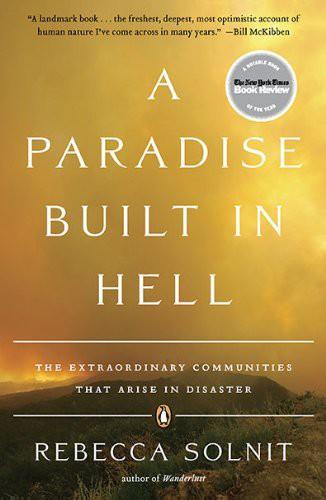
A Paradise Built in Hell: Extraordinary Communities That Arise in Disaster
by
Rebecca Solnit
Published 31 Aug 2010
Paul newspaper): http://recordingkatrina.blogspot.com/2005/09/minneapolisst-paul-city-pages-new.html/. 236 Compass told . . . Oprah Winfrey, “We had little babies in there”: Quoted in Douglas Brinkley, The Great Deluge: Hurricane Katrina, New Orleans and the Mississippi Gulf Coast (New York: HarperCollins, 2006), 573. 236 Nagin reported . . . “hundreds of gang members”: Brian Thevenot and Gordon Russell, “Reports of Anarchy at Superdome Overstated,” Newhouse News Service, September 26, 2005. 236 “in that frickin’ Superdome”: Ray Nagin, in Susannah Rosenblatt and James Rainey, “Katrina Takes a Toll on Truth, News Accuracy,” Los Angeles Times, September 27, 2005. 237 “These are some of the forty thousand extra troops”: Governor Kathleen Blanco, quoted in When the Levees Broke, DVD, directed by Spike Lee (2006; HBO Documentary Films and Forty Acres and a Mule Filmworks), and in “Military Due to Move into New Orleans,” CNN, September 2, 2005, among other sources. 237 “On the dark streets, rampaging gangs”: CNN Reports, Katrina: State of Emergency (Kansas City: Andrews McMeel Publishing, 2005), 75. 237 “Chaos gripped New Orleans”: Editorial, New York Times, September 1, 2005. 237 The police were captured on national television: See NBC report, available at http://www.youtube.com/watch?
…
Locked and Loaded There were many ways in which the war in Iraq spilled over into Hurricane Katrina. Governor Blanco’s troops fresh from the battlefields of Iraq, M16s locked and loaded, implied that New Orleans too was a war zone and that the job of the National Guard was to retake the city. The Army Times took this literally in a September 2 news article headlined, “Troops Begin Combat Operations in New Orleans” that began, “Combat operations are under way to take this city back in the aftermath of Hurricane Katrina.” In other words, the stranded citizens were the enemy and the city was to be taken from them.
…
Haveláclav Healey, Mark Heat waves Hedges, Chris Hernandez, Marisol Herrington, Donnell Heston, Charleton Hobbes, Thomas Holhouser, Anna Amelia Holme, Rasmus Holy Cross Neighborhood Association Horne, Jed Hot Eight Brass Band Human nature Hurricane Katrina HurricaneHousing.org Huxley, Thomas Henry Ice storm of 1998 Iceland Ingram, Stuart Institutional Revolutionary Party (PRI) Jackson, Linda Jacobson, Pauline Jaffery, Zaheer James, Henry James, William Janoff-Bulman, Ronnie Jawetz, Tom Johnstone, Dwight Joy See also Carnival Joyce, Kate Jubilee Kanto Earthquake, Japan Kaplan, Temma Katrina, see Hurricane Katrina Katsouros, Father James King, Edwin King Jr., Martin Luther King, Robert (Wilkerson) Klein, Laura Cousino Klein, Naomi Klinenberg, Eric Koudelka, Josef Kropotkin, Peter Lafler, Henry Anderson Landfield, Jerome Barker Leavitt, Judith Le Bon, Gustave Lee, Spike Lewis, Michael Liang, Hugh Kwong Lincoln, Abraham Lisbon earthquake Living Through the Blitz Lloyd, Dorothy Loma Prieta earthquake London Can Take It (film) London, England London, Jack The Long Loneliness (Day) Looting, looters, see Theft, Thieves Lopez, Barry Lower Ninth Ward Neighborhood Empowerment Network Association (NENA) Lucha libre MacDonald, Laura Made with Love Café Madison, Ronald and Lance Madrid, President Miguel de la Managua earthquake March, Aggie Mardi Gras, see New Orleans Martial law Martin, Father James Martin, Lillien Jane Maurin, Peter Mayblum, Adam McKinney, Phoebe Media Mexico Mexico City Coordinadora Única de Damnificados Earthquake Seamstresses and sweatshops Tepito Tlaltelolco Meyers, Ellen Miller and Lux, San Francisco wholesale butchers Miranda, Alessandro Mizpah Café Monsiváis, Carlos Moog, Peter “Moral Equivalent of War” (James) Mounier, Emmanuel Movies Mueller, Tobin James Mussolini, Benito Mutual aid Mutual Aid: A Factor of Evolution (Kropotkin) Nagin, Mayor Ray National Guard In 1906 San Francisco In New Orleans National Opinion Research Center (NORC) NENA (Lower Ninth Ward Neighborhood Empowerment Network Association) New Orleans Algiers Point Convention Center Coroner Crescent City Connection Demographics Gretna (suburb of) Hospitals Lower Ninth Ward Mardi Gras in Musicians’ Village Murders in New Orleans Police Department St.

Twilight of the Elites: America After Meritocracy
by
Chris Hayes
Published 11 Jun 2012
But rather than actively facilitating the evacuation of the indigent, the carless, and the disabled, the city directed those stranded without a way out of the city to the centrally located football stadium, the Superdome. (This was done, it should be noted, in contravention of established evacuation best practices and the city’s own written plan, but likely necessary given how late the mandatory evacuation order was issued and the scarcity of bus drivers by that late point.) It soon became clear, as people streamed toward the Superdome, that planners had vastly underestimated just how many people would end up there: eventually as many as twenty thousand people were massed in the Superdome, which had lost electricity, had a hole in the roof, and the plumbing of which was soon overwhelmed and filling the entire structure with the odor of raw sewage.
…
In 2008, trust in a number of institutions, most notably the presidency, shot up, born on a wave of optimism ushered in by the beginning of the Obama era. For a year, trust in the President as an institution was above 50 percent. But by 2010 it had plummeted back down toward Bush levels in the immediate aftermath of Hurricane Katrina. Part of the reason for that decline was that despite his campaign promises to take on the “system,” the President has operated safely within it. His approach to our broken institutions has been an attempt to will them back into functioning through sheer determination, hoping to initiate a virtuous circle in which improved institutional performance leads to increased trust and involvement, which would in turn improve institutional performance.
…
Bishops may be an extreme example, but this same kind of social distance is a reliable theme in the biggest disasters of the decade. Take, for instance the case of New Orleans and the thousands of its citizens stranded in the drowning city. EVACUATING NEW ORLEANS Nineteen hours before Hurricane Katrina made landfall, at 11 A.M. on the morning of Sunday, August 28, 2005, New Orleans mayor Ray Nagin called a press conference. After several days of increasingly urgent warnings from him and the governor of the state for residents of the Crescent City to leave, Nagin finally issued a “mandatory evacuation.”
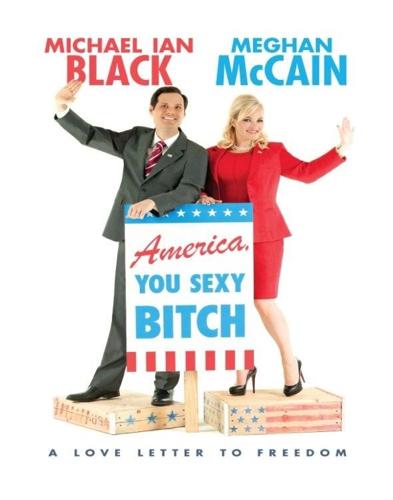
America, You Sexy Bitch: A Love Letter to Freedom
by
Meghan McCain
and
Michael Black
Published 31 May 2012
Everything from “Heck of a job, Brownie” to “George Bush does not care about black people” will forever haunt my memory of watching the terrible images of people standing on rooftops, lined up at the Superdome, and the endless red X’s and body bags. I do not pretend to completely understand where things exactly failed, starting from what could have been done to strengthen the levees so they wouldn’t break, to getting FEMA to New Orleans faster, to everything that made Hurricane Katrina the disaster and tragedy that it was. All I know is what I felt when it was happening, as I prepare to see how far the worst-affected part of the city has come.
…
My head is throbbing with pain, but I feel like laughing. For all the fun and excess that the night before has given us, the day ahead is going to be a lot more serious and somber. We are going to spend the day taking a tour of the Lower Ninth Ward. It’s incredible to think that Hurricane Katrina happened so recently. For a lot of people Hurricane Katrina and the handling of the disaster by the Bush administration was the end of trust, or at least support, of the Bush White House. No matter which way you spin the events, it’s difficult to give President Bush any leeway. A lot of people died unnecessarily because of the lack of effort and outreach from Washington.
…
He is also a big, burly guy who is more than happy to help me get in and out of the RV and help me with my “Flintstones-sized suitcase.” He is a doll, and he clearly likes me a lot more than Michael, which makes me happy. Michael: The first New Orleans landmark is the Superdome, its big white mushroom cap sprouting just off of I-10. The Superdome feels a little like the American Chernobyl. Something horrible happened there, but it’s invisible now. Of course, New Orleans is still habitable and there are no radioactive wolves wandering around, so maybe the analogy is imperfect, but it’s still kind of blood chilling seeing it there, a giant, puffy haunted house.
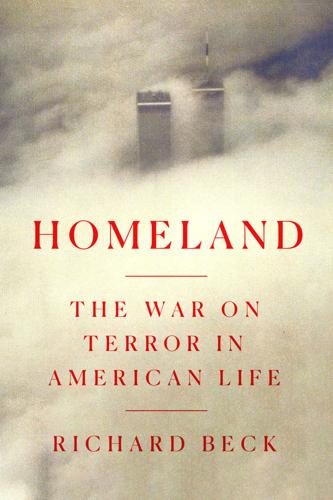
Homeland: The War on Terror in American Life
by
Richard Beck
Published 2 Sep 2024
Kyle once claimed, for instance, that he and another man had driven down to New Orleans after Hurricane Katrina in 2005. They’d seen reports of looting on television, and they wanted to help keep the peace. Kyle said that while standing on top of the Superdome, the stadium where the NFL’s New Orleans Saints play their home games, he and his companion set up their rifles and shot dozens of people who they thought were making trouble down on the ground. No reports of a sniper going on a killing spree at the Superdome ever emerged to corroborate this story.[81] If it is some consolation that a decorated Navy SEAL didn’t actually murder victims of a natural disaster, that consolation is tempered by the question that naturally follows: What kind of decorated Navy SEAL thinks it would reflect well on him for people to think he did?
…
The NFL consulted with the FBI, the Environmental Protection Agency, and the Centers for Disease Control and Prevention in the run-up to the game. The Federal Emergency Management Agency (FEMA), which became notorious a few years later for leaving thousands of New Orleanians stranded after Hurricane Katrina, oversaw the evacuation plan in case terrorists did manage to strike.[9] The mayor of New Orleans estimated that forty-eight different agencies were involved.[10] If the inside of the Superdome was a football- and America-themed amusement park, the outside was fortified like a military base in enemy territory. The stadium was surrounded with concrete barriers and an eight-foot-tall fence, and National Guard soldiers carrying M-16 rifles patrolled the grounds along with bomb-sniffing dogs.
…
Officials called in the Louisiana National Guard, but three thousand of its eleven thousand members, along with most of its heavy equipment, had been shipped over to Iraq.[6] Two days after the storm, a FEMA official emailed the agency director, Michael Brown, from the Superdome and said that people were likely to die within hours if help didn’t arrive immediately. Brown’s press secretary replied that the director wasn’t available at the moment, writing, “It is very important that time is allowed for Mr. Brown to eat dinner.”[7] On September 2, as New Orleanians remained trapped in their houses and the Superdome, Bush told Brown that he was doing “a heck of a job.”[8] Brown resigned a week and a half later, transitioning into several years of work in disaster response for the private sector, plus a job as a talk-radio host.
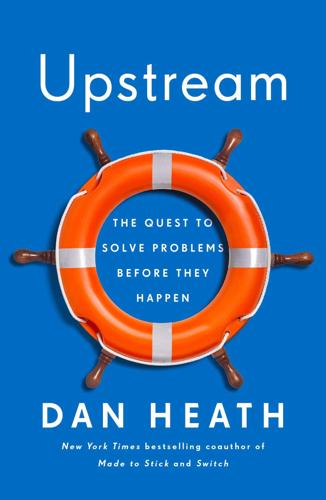
Upstream: The Quest to Solve Problems Before They Happen
by
Dan Heath
Published 3 Mar 2020
Here is where I am going to test your patience by asking you to consider how two dissonant ideas might both be true: First, that the disaster response for the people stranded in New Orleans was unspeakably bad, and second, that many thousands of lives were saved because of the planning that was sparked by Hurricane Pam. In short: Hurricane Katrina’s effects were terrible, and they could have been much worse. Because there were two final rows in the chart that Beriwal showed the Senate—two rows that show the biggest points of difference between Hurricane Pam and Hurricane Katrina: “HURRICANE PAM” DATA ACTUAL RESULTS FROM HURRICANE KATRINA Over 60,000 deaths 1,100 deaths reported to date in Louisiana; over 3,000 still missing 36% evacuated prior to landfall 80% to 90% evacuated prior to landfall In 2019, Beriwal said of Hurricane Pam, “We predicted the consequences almost to the scientific bull’s-eye.
…
After an intense and dramatic week of grappling with Hurricane Pam, the group had cobbled together a set of emergency-response plans: some richly detailed, some barely fleshed out. It was a start. Thirteen months after the Hurricane Pam simulation, in late August 2005, Hurricane Katrina hit New Orleans. In her Senate testimony roughly five months after Katrina, Beriwal showed a chart comparing the simulation to the reality: “HURRICANE PAM” DATA ACTUAL RESULTS FROM HURRICANE KATRINA 20 inches of rain 18 inches of rain City of New Orleans under 10 to 20 feet of water Up to 20 feet of flooding in some areas of New Orleans Overtopping of levees Levees breached Over 55,000 in public shelters prior to landfall Approximately 60,000 people in public shelters prior to landfall Over 1.1 million Louisiana residents displaced 1 million Gulf Coast residents displaced for the long-term; majority are Louisiana residents 786,359 people in Louisiana lose electricity at initial impact 881,400 people in Louisiana reported to be without electricity the day after impact The similarities are uncanny.
…
In the years after 9/11: Christopher Cooper and Robert Block, Disaster: Hurricane Katrina and the Failure of Homeland Security (New York: Henry Holt, 2006), author’s note. a contract for $800,000: Ibid., 2 and 6. The assignment: Create hurricane response plans: Madhu Beriwal, “Preparing for a Catastrophe: The Hurricane Pam Exercise,” Statement Before the Senate Homeland Security and Governmental Affairs Committee, January 24, 2006. taking 53 days to complete: Ibid., 2. convened approximately 300 critical players: Ibid., 4. “Though there is plenty of time to flee”: Christopher Cooper and Robert Block, Disaster: Hurricane Katrina, 1. “no fairy dust”: Ibid., 19.
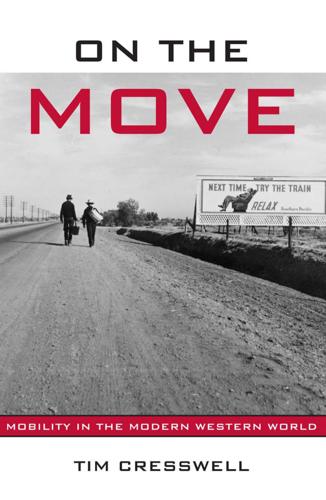
On the Move: Mobility in the Modern Western World
by
Timothy Cresswell
Published 21 May 2006
Some of the worst scenes from RT52565_C010.indd 261 4/13/06 7:48:42 AM 262 • On the Move New Orleans were of elderly hospital patients abandoned as the waters rose. Many died. To say that the human disaster that followed Hurricane Katrina was not about race or age or class, but instead about car ownership is to divert attention to how mobility is social through and through. Tourists/Refugees/Evacuees The issue of the “mobility poor” was not the only way in which the politics of mobility came to the surface in the early days of September. They also arose in the accounts of some British tourists who had joined New Orleans residents in the Superdome as the floodwaters rose. The Superdome had been designated as a safe space for those many people who could not simply leave the city.
…
It is a place where national and international conceptions of mobility as a right becomes a reality or a cruel trick, depending on what kind of mobile subject you are planning to become. Through an examination of Schiphol Airport in Amsterdam, I bring together the different scales and narratives of mobility that run throughout this book. The book ends with an epilogue on the politics of mobility in and around New Orleans during and following the devastating experience of Hurricane Katrina in 2005. RT52565_C001.indd 24 4/13/06 7:21:48 AM CHAPTER 2 The Metaphysics of Fixity and Flow The purpose of this chapter is to provide a first example of the way the geographical imagination—ideas about such things as place, spatial order, and mobility—provides an underlying metaphysics that influences and informs thought and action.
…
The story of mobility in modernity is one in which creativity continues to play an important role. Virtual, ideal, mobilities are still being produced and real, fleshy people continue to refuse to comply. RT52565_C009.indd 258 4/18/06 7:48:33 AM Epilogue Hurricane On August 29, 2005 a category four hurricane, Katrina, hit the Gulf Coast of Louisiana with 150-mile-per-hour winds and a huge tidal surge that broke the levees of New Orleans and flooded 80 percent of the city. Over one thousand people were killed and hundreds of thousands left homeless. New Orleans residents who could not find shelter and food with relatives and friends were evacuated to locations across the American south.
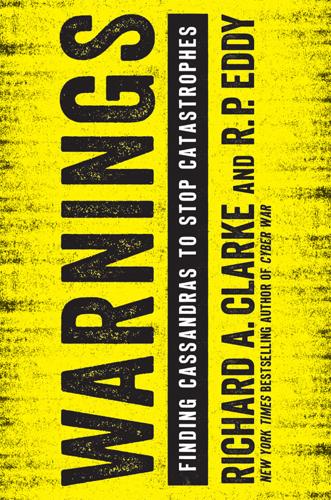
Warnings
by
Richard A. Clarke
Published 10 Apr 2017
Ivor van Heerden freely admits to wearing his heart on his sleeve and minces no words when asked about the many failures of leadership leading up to, during, and after Hurricane Katrina. His three-hundred-page narrative entitled The Storm lays bare his disdain for politicians who derailed efforts to rebuild Louisiana’s wetlands, for FEMA officials who disregarded LSU’s published disaster research and storm-surge models, and for politicians who thanked each other and congratulated themselves for acting decisively while thousands of people remained trapped in attics, stranded on rooftops, and marooned in the New Orleans Superdome. He recounts the naïveté of his early years, imagining that clear science and empirical evidence would open the way for bold action.
…
See NASA National Center for Atmospheric Research (NCAR), 241, 253 National Institutes of Health (NIH), 195, 222, 337 National Intelligence Council (NIC), 20–21, 26–27 National Intelligence Daily (NID), 24 National Intelligence Officers (NIOs), 20, 22 Allen as Warning officer, 20, 21–27, 38, 122 National Oceanic and Atmospheric Administration (NOAA), 52 National Science Advisory Board for Biosecurity (NSABB), 223 National Science Foundation (NSF), 315, 328 National Security Agency (NSA), 35, 211 National Security Council (NSC), 218, 220 National warning office, functions of, 354–65 persuasion, 364–65 responses, 358–64 scanning for problems, 354–56 separating signal from noise, 356–58 National Weather Service, 53, 182 NATO (North Atlantic Treaty Organization), 26 Natural gas, 42, 130–31 Natural selection, 325, 329 Natural Systems Management and Engineering Program, 43–44 Nature, 246, 279 Navy, U.S., 199, 200, 214 Nazi Germany, 10–11, 213 Negroponte, John, 37–38 NEOWISE Project, 316 Nest, 294–95 Neuroscience, 13, 14–15, 34–35 Neustadt, Richard, 196–97 Neutron radiation, 83 New Deal, 213 New Orleans. See also Hurricane Katrina history of, 41–42 hurricane threat, 44–46 levee system, 40, 41–42, 46, 49, 50, 53–55 New Orleans Scenario, 45, 46–50, 52 New Orleans Superdome, 51 New Orleans Times-Picayune, 50 New York (magazine), 152, 157, 158, 159 New Yorker, 342 New York Observer, 150 New York Times, 153, 160, 240–44, 279, 294, 340 Ng, Andrew, 212, 213 Nihon Sandai Jitsuroku, 79 Nishimura, Isao, 77–78 Nobel Prize, 193, 202, 327 Noda, Yoshihiko, 96 Noel, Walter M., 108 “No man in the dock” theory, 380–81n No One Was Listening (Markopolos), 105 North American Drought of 1988, 239 North American Electrical Reliability Corporation (NERC), 286–87 North Korea, 24, 25, 266, 325–26 Northrop Grumman, 200, 214 “Now is not the time” fallacy, 188 NPR, 205, 227, 233 Nuclear and Industrial Safety Agency (NISA), 75–76, 80, 96, 97 “Nuclear earthquake disaster,” 91–92 Nuclear power, in Japan, 88–89, 94–95, 96, 98.
…
CHAPTER 3: THE REBUILDER: HURRICANE KATRINA 1. Ivor van Heerden, The Storm: What Went Wrong and Why During Hurricane Katrina (New York: Penguin, 2007), 78–81; U.S. House of Representatives, A Failure of Initiative: Final Report of the Select Bipartisan Committee to Investigate the Preparation for and Response to Hurricane Katrina, Feb. 15, 2006, p. 81; and Madhu Beriwal, “Preparing for a Catastrophe: The Hurricane Pam Exercise,” Statement before the Senate Homeland Security and Governmental Affairs Committee, Jan. 24, 2006. 2. Douglas Brinkley, The Great Deluge: Hurricane Katrina, New Orleans, and the Mississippi Gulf Coast (New York: HarperCollins, 2006), 5–7. 3.

The Ones We've Been Waiting For: How a New Generation of Leaders Will Transform America
by
Charlotte Alter
Published 18 Feb 2020
THE BIG ONE helicopters ignoring them overhead: Kirk Johnson, “For Storm Survivors, a Mosaic of Impressions,” The New York Times, September 11, 2005, nytimes.com/2005/09/11/us/nationalspecial/for-storm-survivors-a-mosaic-of-impressions.html. coffins dislodged from graves: Carlos Barria, “Hurricane Katrina: Scenes of Destruction 10 Years On—In Pictures,” The Guardian, August 28, 2015, theguardian.com/artanddesign/gallery/2015/aug/28/hurricane-katrina-scenes-overlaid-in-pictures. walkway to their death: Nat Scott, “Refuge of Last Resort,” USA Today, August 24, 2015, ftw.usatoday.com/2015/08/refuge-of-last-resort-five-days-inside-the-superdome-for-hurricane-katrina. schools were forced to close: Irwin E. Redlener and Gabrielle Schang, “Responding to a Humanitarian Crisis in Louisiana and Mississippi: Urgent Need for a Health Care ‘Marshall Plan,’” Columbia University, Mailman School of Public Health, April 17, 2006, doi.org/10.7916/D8VD76V8.
…
The archvillain in Potterworld is Lord Voldemort, but his reign was supported by adults—from the Minister of Magic to Hogwarts parents—who were too foolish or cynical to resist him. That, maybe, is a hint to the enduring power of Potter: it was a story about what happens when adults fail, when institutions falter, and when brave young people have to take matters into their own hands. THE BIG ONE AUGUST 2005 HURRICANE KATRINA, NEW ORLEANS Everyone said this was the Big One. The city’s levees burst and water poured into the Ninth Ward of New Orleans—filled mostly with poor black people—and soon 80 percent of the city was flooded. People camped out on their roofs for days, screaming in vain at helicopters ignoring them overhead.
…
Even though the movement was mostly led by black people under forty, distinctions emerged within that cohort, especially when it came to deciding whether to work within the system or outside of it. Organizers in their late thirties grew up in the era of Rodney King and Amadou Diallo, but also in a period of relative black prosperity. Activists in their twenties and early thirties never directly experienced that prosperity: many saw the response to Hurricane Katrina in 2005 and the daily degradations of black life in America as evidence that government didn’t care about black people and never would. “There’s cynicism around whether it’s enough to have black people at the table making decisions,” said Garza, who is in her late thirties. Activists who are younger, she said, “don’t believe in the table.”
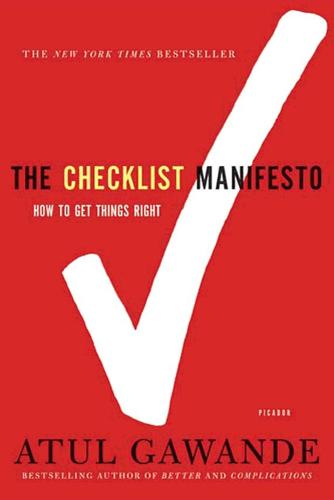
The Checklist Manifesto: How to Get Things Right
by
Atul Gawande
Published 2 Jan 2009
THE IDEA 73 “At 6:00 a.m.”: Hurricane Katrina events and data from E. Scott, “Hurricane Katrina,” Managing Crises: Responses to Large-Scale Emergencies, ed. A. M. Howitt and H. B. Leonard (Washington, D.C.: CQ Press, 2009), pp. 13–74. 76 “Of all organizations”: Wal-Mart events and data from S. Rose -grant, “Wal-Mart’s Response to Hurricane Katrina,” Managing Crises, pp. 379–406. 78 “For every Wal-Mart”: D. Gross, “What FEMA Could Learn from Wal-Mart: Less Than You Think,” Slate, Sept. 23, 2005, http://www.slate.com/id/2126832. 78 “In the early days”: Scott, “Hurricane Katrina,” p. 49. 80 “As Roth explained”: D.
…
“The inspectors have more troubles with the safety of a two-room addition from a do-it-yourselfer than they do with projects like ours. So that’s where they focus their efforts.” Also, I suspect, at least some authorities have recognized that when they don’t let go of authority they fail. We need look no further than what happened after Hurricane Katrina hit New Orleans. At 6:00 a.m., on August 29, 2005, Katrina made landfall in Plaquemines Parish in New Orleans. The initial reports were falsely reassuring. With telephone lines, cell towers, and electrical power down, the usual sources of information were unavailable. By afternoon, the levees protecting the city had been breached.
…
.; Alex Arriaga, Angela Bader, Kelly Bernier, Bridget Craig, Priya Desai, Rachel Dyer, Lizzie Edmondson, Luke Funk, Stuart Lipsitz, Scott Regenbogen, and my colleagues at the Brigham and Women’s Center for Surgery and Public Health; and the MacArthur Foundation. I am deeply indebted to the many experts named throughout the book whose generosity and forbearance helped me explore their fields. Unnamed here are Jonathan Katz, who opened the door to the world of skyscraper building; Dutch Leonard and Arnold Howitt, who explained Hurricane Katrina to me; Nuno Alvez and Andrew Hebert, Rialto’s sous chefs, who let me invade their kitchen; Eugene Hill, who sent me the work of Geoff Smart; and Marcus Semel, the research fellow in my group who analyzed the data from Harvard Vanguard Medical Associates showing the complexity of clinical work in medicine and the national data showing the frequency of death in surgery.
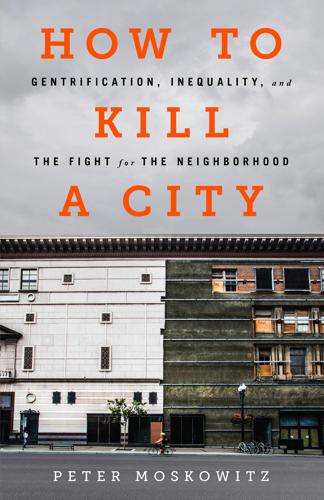
How to Kill a City: The Real Story of Gentrification
by
Peter Moskowitz
Published 7 Mar 2017
According to Ishiwata, phrases like these: Eric Ishiwata, “‘We Are Seeing People We Didn’t Know Exist’: Katrina and the Neoliberal Erasure of Race,” in The Neoliberal Deluge: Hurricane Katrina, Late Capitalism, and the Remaking of New Orleans, ed. Cedric Johnson (Minneapolis: University of Minnesota Press, 2011). “I don’t know. That doesn’t make sense to me”: Charles Babington, “Hastert Tries Damage Control After Remarks Hit a Nerve,” Washington Post, September 3, 2005. The biggest study of their whereabouts: Narayan Sastry and Christine Peterson, “The Displaced New Orleans Residents Survey Questionnaire,” RAND Corporation, 2010, www.rand.org/labor/projects/dnors.html. The city has been “resurrected”: Jason Berry, “Eight Years After Hurricane Katrina, New Orleans Has Been Resurrected,” Daily Beast, August 29, 2013.
…
I’d also add that there’s a precursor to all of these stages in which a municipality opens itself up to gentrification through zoning, tax breaks, and branding power. This preparatory phase is rarely seen or talked about because it happens so long before most people witness gentrification in action, but this stage is crucial to understanding gentrification. In New Orleans, Stage 0 was Hurricane Katrina. The city used the opportunity presented by the storm’s destruction of poor and African American neighborhoods to attract white people and investment. Gentrification in New Orleans was happening before Katrina, but the storm kicked it into high gear. Between 2000 and 2010, the black population in the city’s “hippest” neighborhood, Bywater, declined by 64 percent; it’s hard to know exactly how much of this shift happened after Katrina hit the city in 2005, because there’s no census data from right before the storm, but most experts agree the majority of the population shift happened after Katrina.
…
Those neighborhoods—the French Quarter, Central Business District, Bywater, Marigny, Garden District, Irish Channel, and parts of Uptown—have for decades created a kind of teapot shape of whiteness within the city, but between 2000 and 2010, Tulane University geographer Richard Campanella noted the teapot had both “broadened and internally whitened.” The change could be seen on nearly every street, as new arbiters of hipness—coffee shops, boutiques, art galleries—bloomed on blocks with houses still devastated by Hurricane Katrina. As the city celebrated its new life, nearly no one in power—the mayor, the governor, council people—seemed to care about the tens of thousands of black people who never returned. When I interviewed African Americans who left New Orleans after the storm, they told me they’re afraid to go back because it feels like a different city, like it’s no longer theirs, and in many ways they are right.
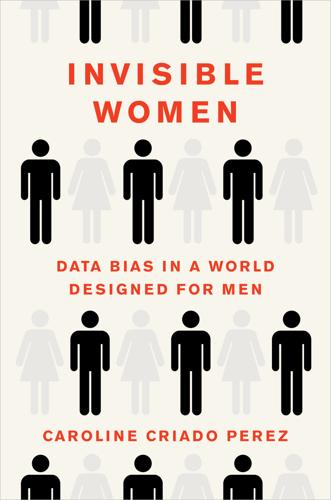
Invisible Women
by
Caroline Criado Perez
Published 12 Mar 2019
On the subject of the violence women face in disaster contexts, we know that violence against women increases in the ‘chaos and social breakdown that accompany natural disaster’ – but, in part because of that self-same chaos and social breakdown, we don’t know by exactly how much. During Hurricane Katrina local rape crisis centres had to close, meaning that in the days that followed no one was counting or confirming the number of women who had been raped.41 Domestic-violence shelters also had to close, with the same result. Meanwhile, as in Bangladesh, women were experiencing sexual violence in gender-neutral storm shelters. Thousands of people who had been unable to evacuate New Orleans before Katrina hit were temporarily housed in Louisiana’s Superdome. It didn’t take long for lurid stories of violence, of rapes and beatings, to start circulating.
…
There were reports of women being battered by their partners.42 ‘You could hear people screaming and hollering for people to help them, “Please don’t do this to me, please somebody help me”’, one woman recalled in an interview with IWPR.43 ‘They said things didn’t happen at the Superdome. They happened. They happened. People were getting raped. You could hear people, women, screaming. Because there’s no lights, so it’s dark, you know.’ She added, ‘I guess they was just grabbing people, doing whatever they wanted to do.’ Precise data on what happened to whom in Hurricane Katrina has never been collated. For women who try to escape from war and disaster, the gender-neutral nightmare often continues in the refugee camps of the world.
…
They completely missed, says Fordham, ‘things like nursery schools or health centres’, as well as the smaller-scale informal workplaces, which, as we’ve seen, are particularly relevant to women’s needs. In Miami, disgruntled women’s rights activists set up ‘Women Will Rebuild’ to address the gaps in the official scheme. We Will Rebuild was a while ago now, but when Hurricane Katrina hit New Orleans thirteen years later, it became clear that lessons had not been learned. Over 30,000 people were displaced by the August 2005 hurricane (at the time, the US was in the top ten of countries with ‘major internally displaced populations of concern’5) and the single largest category of these internally displaced populations were African American women.
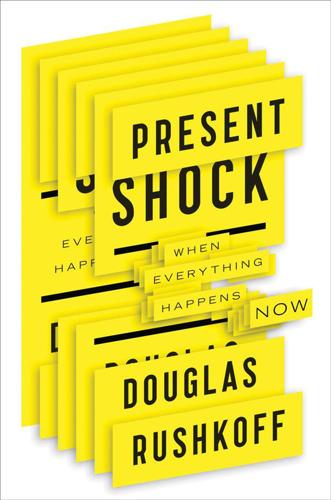
Present Shock: When Everything Happens Now
by
Douglas Rushkoff
Published 21 Mar 2013
The world is now connected by the news feeds of twenty-four-hour networks, and so together we watch the slow-motion, real-time disasters of Hurricane Katrina, Deepwater Horizon, and the Fukushima nuclear plant—as well as what feels like the utter ineffectualness of our leaders to do anything about any of it. CNN put up a live feed of the BP well spewing out its oil into the gulf and kept it in a corner of the broadcast continuously for months. The constancy of such imagery, like the seemingly chronic footage of Katrina victims at the New Orleans Superdome holding up signs begging for help, is both unnerving and desensitizing at the same time. With each minute that goes by with no relief in sight our impatience is stoked further and our perception of our authorities’ impotence is magnified.
…
In this medium, contributions by intellectuals lose their power to create a focus.”25 To be sure, the rise of citizen journalism brings us information that the mainstream media lacks either the budget for or fortitude to cover. Initial reports of damage during Hurricane Katrina came from bloggers and amateur videographers. However, these reports also inflated body counts and spread rumors about rape and violence in the Superdome that were later revealed not to have occurred.26 Footage and reporting from the Arab Spring and the Syrian revolution—where news agencies were limited or banned—were almost entirely dependent on amateur journalists.
…
See also change “Grup” (aging yuppie hipster), 151–52 Guild Wars (game), 62 guilt, 121 Gygax, Gary, 60n Habermas, Jürgen, 51 Hamlet, “gist” of, 233 hard drives, 140, 140n Hayek, Friedrich, 226–27, 228 HBO, 34, 107, 210 healthcare, 64, 102–3, 173–74, 191 Heroes (TV show), 32, 34 High Frequency Active Auroral Research Program (HAARP), 198, 201 Hillis, Danny, 134 Hilton, Paris, 39 hiring, 156, 217 history: calendars associated with, 81; personal, 85; present shock and, 252; as progression, 77 History Channel, 243, 245 Hitchcock, Alfred, 26 holidays, 78 Home Shopping Network, 94 Homebrew Computer Club, 203 HTML. 5, 128 Huffington Post, 50–51 human society, as cybernetic system, 225–26 humans: clock as metaphor for, 81, 82; computers as metaphor for, 82–83; as content, 259; evolution of, 254–60; limits of, 254–60; as machines, 95; needs of, 81; specialness of, 258; stages in development of, 76–87; and transcending humanity, 251–54; unpredictability of, 219–30 humor, 25. See also situation comedies Hung, William, 37 hunter-gatherer society, 76–77 Hurricane Katrina, 51 Hurst, Mark, 144 Hussein, Saddam, 46 I Ching, 252 I Dream of Jeannie (TV show), 14 identity, digiphrenia and, 122 iHeart, 107 Inception (movie), 201 Industrial Revolution, 87, 161–63, 164–65 information: apocalypto and, 2, 259, 263; bombardment of, 72; collection of, 158–59; control of, 223; digiphrenia and, 72, 75, 86, 116; filter failure and, 116–17; flow of, 141–42, 145–49; fractalnoia and, 199, 223; marketing and, 6, 85, 128, 158, 240; new “now” and, 3, 5, 6; overload of, 2, 116; privacy, 158; stored, 5, 142–49; time as, 86 innovation, 187, 188, 205, 217–19, 231–32 instant gratification, 94 instinct.
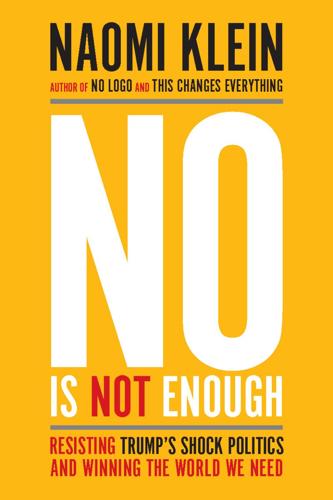
No Is Not Enough: Resisting Trump’s Shock Politics and Winning the World We Need
by
Naomi Klein
Published 12 Jun 2017
Under Pence’s leadership, Republican Study Committee came up with list of “Pro-Free-Market Ideas for Responding to Hurricane Katrina and High Gas Prices” Paul S. Teller, “Pro-Free-Market Ideas for Responding to Hurricane Katrina and High Gas,” e-mail, September 13, 2005, http://www.naomiklein.org/shock-doctrine/resources/part7/chapter20/pro-market-ideas-katrina. Commitment to wage all-out war on labor standards and on the public sphere… Paul S. Teller, “Pro-Free-Market Ideas for Responding to Hurricane Katrina and High Gas,” e-mail, September 13, 2005, http://www.naomiklein.org/shock-doctrine/resources/part7/chapter20/pro-market-ideas-katrina.
…
Ricke and Ken Caldeira, “Maximum Warming Occurs About One Decade after Carbon Dioxide Emission,” Environmental Research Letters 9:12 (2014), accessed from: http://iopscience.iop.org/article/10.1088/1748-9326/9/12/124002. Rancher: “our Hurricane Katrina” Jack Healy, “Burying Their Cattle, Ranchers Call Wildfires ‘Our Hurricane Katrina,’ ” New York Times, March 20, 2017, https://www.nytimes.com/2017/03/20/us/burying-their-cattle-ranchers-call-wildfires-our-hurricane-katrina.html. Luxury Disaster Response New Yorker: “Doomsday Prep for the Super-Rich” Evan Osnos, “Doomsday Prep for the Super-Rich,” New Yorker, January 30, 2017, http://www.newyorker.com/magazine/2017/01/30/doomsday-prep-for-the-super-rich.
…
Another recommendation called for giving parents vouchers to use at charter schools Paul S. Teller, “Pro-Free-Market Ideas for Responding to Hurricane Katrina and High Gas,” e-mail, September 13, 2005, http://www.naomiklein.org/shock-doctrine/resources/part7/chapter20/pro-market-ideas-katrina. RSC call on Congress to repeal environmental regulations on Gulf Coast, give permission for new oil refineries in the US, and green-light “drilling in the Arctic National Wildlife Refuge” Paul S. Teller, “Pro-Free-Market Ideas for Responding to Hurricane Katrina and High Gas,” e-mail, September 13, 2005, http://www.naomiklein.org/shock-doctrine/resources/part7/chapter20/pro-market-ideas-katrina.
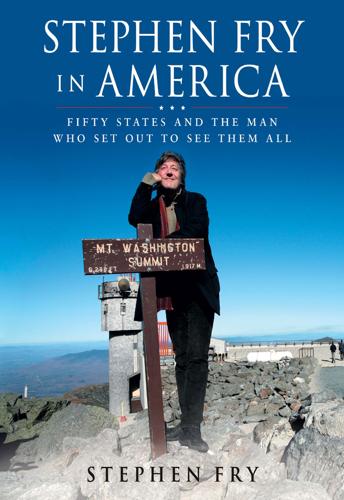
Stephen Fry in America
by
Stephen Fry
Published 1 Jan 2008
All cities of consequence have their own ways of eating and drinking, and their specialities always seem to taste best in situ. By the time Tuesday itself comes I am beginning to feel my age a little as I limp, at eight in the morning, a mile and a half to the back of the queue of carnival floats that winds all the way around the Superdome Convention Centre, that same Superdome that was a scene of such awful misery, stench and despair in the hours and days following Katrina. I am amongst the Zulus. It is hard to explain quite who and what the Zulus are. They are a kind of club or ‘krewe’, made up predominantly of African-Americans and every year thousands of them pay to take part in the parade.
…
I came here once before, sent by Paramount Studios in 1997 to get background for a screenplay adaptation of John Kennedy Toole’s great New Orleans novel A Confederacy of Dunces. Since that visit one catastrophic event in late August 2005 has reshaped everything we think about this enchantingly seductive town: Hurricane Katrina. For New Orleans, time is divided into pre-Katrina and post-Katrina. Mardi Gras I arrive at the beginning of February. A good time to visit, for it is the weekend leading up to ‘Fat Tuesday’, the literal English translation of Mardi Gras. In Britain we call it ‘Shrove Tuesday’ and celebrate with pancakes.
…
They hadn’t been sent for; they just knew that they were wanted. He stayed there, at Ground Zero, for over a month. God knows what kind of horrors he witnessed. I did not feel I could press him. ‘So…you didn’t want to stay and help put out the fire?’ He points out with a mirthless grin that another disaster, Hurricane Katrina, whose ravages I saw back in Louisiana, did nothing but good for Elkhart. All that rehousing created an unprecedentedly huge and urgent demand for RVs. I allow him to sit in the taxi, which is a treat begged for by many dignified and superficially cool and hard to impress Americans, before waving him goodbye.

Merchants of the Right: Gun Sellers and the Crisis of American Democracy
by
Jennifer Carlson
Published 2 May 2023
A similar narrative circulated throughout pro-gun media in 2020. The Truth About Guns sarcastically quipped, “with no supplies, there’s always government assistance. Just like at the Superdome in New Orleans during Hurricane Katrina, right? Failing to prepare translates to preparing to fail” (March 4).17 The reference to Hurricane Katrina is a requiem to a widespread lament within pro-gun circles: the collapse of New Orleans’s political and physical infrastructure in the aftermath of Hurricane Katrina at the time demonstrated the acute need for guns in times of catastrophic social failure, but the existing government structure managed to execute enough gun confiscations—how many is disputed—to demonstrate that not only can emergency gun restrictions happen in the United States; they did happen.18 Many worried that coronavirus could be the next Katrina.
…
Cepaluni et al. (2020). 13. NRA (2020). 14. Liebell (2021: 1). 15. Liebell (2021: 4, 2). 16. See, e.g., Kruse (2013) and Sokol (2008). 17. Boch (2020b). 18. Hurricane Katrina provided a crucial stepping stone—ideologically, politically, and legally—that would update and reinvigorate the significance of guns as crucial to states of emergency alongside their more quotidian marking as instruments of personal protection. In August 2005, Hurricane Katrina tore through the Gulf Coast and wreacked particular havoc on the city of New Orleans—a natural disaster turned human-made catastrophe. Evacuation measures dragged on for weeks as first responders patrolled the city’s rooftops for trapped survivors.
…
Soon after Hurricane Katrina, the Disaster Recovery Personal Protection Act of 2006, which became an amendment to the 2007 Department of Homeland Security Appropriations Act, was passed with bipartisan support and signed by then-President George W. Bush. The Act forbids government authorities from seizing and confiscating lawfully possessed guns during a government-declared state of emergency. According to the NRA’s count in late 2019, 33 other states have also passed their own laws prohibiting confiscation and seizure of lawful firearms during states of emergency, with Hurricane Katrina as a rallying point.
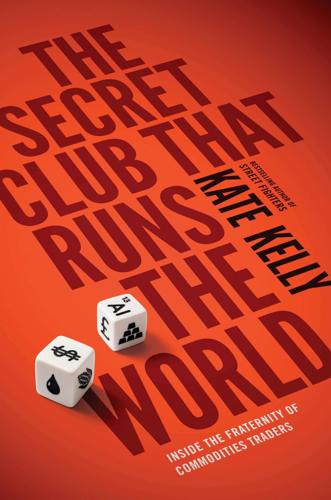
The Secret Club That Runs the World: Inside the Fraternity of Commodity Traders
by
Kate Kelly
Published 2 Jun 2014
So she bought September gas futures and concurrently bet on a price fall by their October counterparts, hoping to benefit from an eventual price discrepancy between the final contract linked to summer and the first one of the winter season, at which point summer-blend gasoline would go out of favor. Her goal was to make about two cents a gallon, or total profits of a little over $250,000. Months later, when Hurricane Katrina made landfall near New Orleans, she was the only trader on Morgan’s index desk who was actually in the office. It was early on Monday, August 29, and many of the energy traders had been in Purchase all weekend to be ready for a potential price spike in commodity contracts that they thought might result from hurricane damage to refineries or drill sites around the Gulf of Mexico.
…
Ruggles demurred on the more immediate offer, thinking he should end things properly with Bank of America, to which he would have to give fair notice. He agreed to start in early April. Delta had been through a rough few years. Clobbered by competition from low-fare rivals and beleaguered by jet-fuel costs in the aftermath of Hurricane Katrina, the carrier had filed for Chapter 11 bankruptcy in September 2005, the very same month in which Jennifer Fan made her $3 million gasoline trade. A year and a half later, Delta reemerged, having cut six thousand jobs, restructured its fleet, and added more profitable international routes. But its ability to borrow money from banks was tarnished, it had lost its spot in the venerable S&P 500 index of blue-chip companies, and its shares were trading on a dodgy stock market called the “pink sheets,” whose companies didn’t meet Securities and Exchange Commission requirements, for just 13 cents apiece.
…
© Luke MacGregor/Reuters/Corbis Glencore CEO Ivan Glasenberg, whose interest in commodity trading was piqued after he overheard two men doing an international candle-wax transaction, on the day his company’s shares were listed in Hong Kong. Glencore’s IPO valued it at an impressive $59 billion. Clarke/AFTP/Getty Images Jennifer Fan, the math prodigy who was hired as an index trader on Morgan Stanley’s commodity desk at age twenty. Her bet on gasoline prices generated $3 million after Hurricane Katrina clobbered the Gulf of Mexico. ©2014 NBCUniversal Media, LLC John Mack, who as chairman and CEO of Morgan Stanley worried about aggression and greed on his bank’s commodities team—characteristics that eventually led to trouble. At some point, I’ve got to crush these people, he had thought.
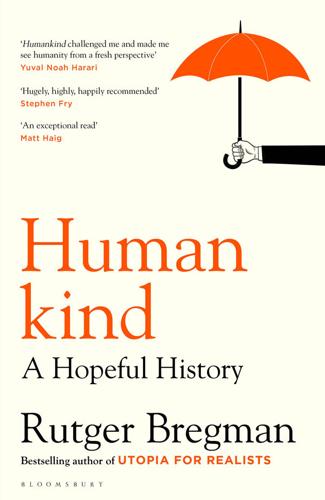
Humankind: A Hopeful History
by
Rutger Bregman
Published 1 Jun 2020
It’s when crisis hits – when the bombs fall or the floodwaters rise – that we humans become our best selves. On 29 August 2005, Hurricane Katrina tore over New Orleans. The levees and flood walls that were supposed to protect the city failed. In the wake of the storm, 80 per cent of area homes flooded and at least 1,836 people lost their lives. It was one of the most devastating natural disasters in US history. That whole week newspapers were filled with accounts of rapes and shootings across New Orleans. There were terrifying reports of roving gangs, lootings and of a sniper taking aim at rescue helicopters. Inside the Superdome, which served as the city’s largest storm shelter, some 25,000 people were packed in together, with no electricity and no water.
…
, Guardian (6 September 2005). 6Quoted in Robert Tanner, ‘New Orleans Mayor Orders Police Back to Streets Amid Increasingly Violent Looting’, Seattle Times (1 September 2005). 7Timothy Garton Ash, ‘It Always Lies Below’, Guardian (8 September 2005). 8Jim Dwyer and Christopher Drew, ‘Fear Exceeded Crime’s Reality in New Orleans’, New York Times (29 September 2005). 9Havidán Rodríguez, Joseph Trainor and Enrico L. Quarantelli, ‘Rising to the Challenges of a Catastrophe: The Emergent and Prosocial Behavior Following Hurricane Katrina’, The Annals of the American Academy of Political and Social Science (No. 1, 2006). 10Matthieu Ricard, Altruism. The Power of Compassion to Change Yourself and the World (New York, 2015), p. 99. 11Enrico L. Quarantelli, ‘Conventional Beliefs and Counterintuitive Realities’, Social Research: An International Quarterly of the Social Sciences (No. 3, 2008), p. 885. 12Quoted in AFP/Reuters, ‘Troops Told “Shoot to Kill” in New Orleans’ (2 September 2005). 13Trymaine Lee, ‘Rumor to Fact in Tales of Post-Katrina Violence’, New York Times (26 August 2010). 14Solnit, A Paradise Built in Hell, p. 131. 15Quoted in CNN Money, ‘Coke Products Recalled’ (15 June 1999). 16B.
…
B., here du Picq, Colonel Ardant, here Duckwitz, Georg Ferdinand, here, here Easter Island, here, here, here, here, here Eberhardt, Tom, here economic bubbles, here economy (the word), here Egypt, ancient, here Eichmann, Adolf, here, here, here, here ‘elevation’, here Elliott, Jane, here empathy, here, here, here, here, here enclosures, here English civil war, here Enigma Code, here Enlightenment, here, here, here, here Enron, here Eshelman, Dave, here, here EXIT-Deutschland, here eye contact, here eyes, whites of, here, here Facebook, here, here, here, here, here, here Falklands War, here farming, development of, here, here, here, here, here, here, here, here Farrar, Sophia, here FAVI, here Ferguson, Brian, here Ferguson, Corporal, here Fink, Joseph, here fishing rights, here Flenley, John, here, here Fonua, Dr Posesi, here Ford, Gerald, here Frank, Anne, here Frank, Robert, here Frankl, Victor, here Franklin, Benjamin, here French Revolution, here, here, here Freud, Sigmund, here Friedman, Milton, here friendship, and war, here Fry, Douglas, here Fuhlrott, Johann Carl, here Gandhi, Mahatma, here, here gang rape, here García, Juan Pablo, here Garner, Eric, here genocide, here Genovese, Catherine Susan (Kitty), here, here, here, here Gerbner, George, here, here Gettysburg, Battle of, here Gibson, Bryan, here Gingrich, Newt, here Gladwell, Malcolm, here, here, here, here, here, here Göbekli Tepe temple, here, here Goebbels, Joseph, here Goethe, Johann Wolfgang von, here Goffman, Erving, here Golden Rule, here Golding, William, here, here, here, here, here, here, here see also Lord of the Flies, The Goldman, Emma, here Golem Effect, here González, Don Felipe, here Goodall, Jane, here, here Google, here, here gorillas, here, here Göring, Hermann, here Gospel of Matthew, here see also Sermon on the Mount Gray, Peter, here Great Wall of China, here Greece, ancient, here Griffith, Lieutenant Wyn, here Grossman, Dave, here group cohesion v. task cohesion, here Grund, Hattie, here Gulf War, here, here Hadza people, here, here, here, here Haidt, Jonathan, here Hamlin, Kiley, here, here Hammond, Jay, here ‘Happy Birthday’, here Harari, Yuval Noah, here, here, here Hardin, Garrett, here Hare, Brian, here, here, here, here, here Haslam, Alexander, here, here Hawking, Stephen, here healthcare funding, here see also Buurtzorg Heidelberg Catechism, here Henrich, Joseph, here Herodotus, here Hess, Rudolf, here Heyerdahl, Thor, here, here, here Hitler, Adolf, here, here, here, here, here, here, here, here, here, here, here, here Hitler Youth, here Hiwi people, here Hobbes, Thomas, here, here, here, here, here, here, here, here, here, here, here, here, here, here, here Hoffmann, Michael, here Hollander, Matthew, here Holocaust, here, here, here, here, here Homer, here hominins, here, here, here, here, here, here Homo cooperans, here Homo denisova, here Homo economicus, here, here Homo erectus, here Homo ludens, here, here Homo luzonensis, here Homo neanderthalensis, see Neanderthals Homo puppy, appearance of, here Homo sapiens, here, here, here, here, here, here, here, here homosexuality, here, here, here honour killings, here Houben, Rob, here, here Huizinga, Johan, here human evolution, here human sacrifice, here Hume, David, here, here, here Hundred Years War, here Hunt, Terry, here Hurricane Katrina, here Huxley, T. H., here ice ages, here, here Ifalik people, here Ikkersheim, David, here Illich, Ivan, here incentives and motivation, here Industrial Revolution, here inequality, here, here, here, here, here, here, here, here, here Innu people, here institutional diversity, here intelligence, here canine, here IQ tests, here ‘iron law of oligarchy’, here irrigation, communal, here Islamic State (IS), here, here Israel–Palestine conflict, here Jaffe, David, here, here James, Jesse, here James, William, here, here Janowitz, Morris, here, here, here, here Jebel Sahaba, here Jefferson, Thomas, here Jesus Christ, here, here Jews, here, here, here, here, here rescue of Danish Jews, here see also Holocaust Jobs, Steve, here jobs, socially useless, here, here Johnson, Lyndon B., here Johnson, Wendell, here junk playgrounds, here Kant, Immanuel, here Keijzer, Karlijn, here Kelling, George, here, here Keltner, Dacher, here, here, here, here Kennedy, John F., here Kentie, Rienk, here, here Kershaw, Ian, here Keynes, John Maynard, here killer ape theory, here, here, here King, Martin Luther, Jr, here, here, here, here knowledge economy, here, here Konnikova, Maria, here Korean War, here Korpi, Douglas, here Ku Klux Klan, here Kubrick, Stanley, here !
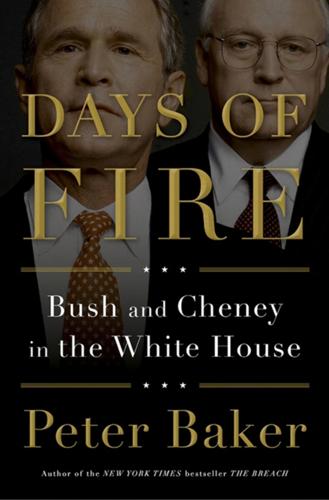
Days of Fire: Bush and Cheney in the White House
by
Peter Baker
Published 21 Oct 2013
Bridgeland, John M. Heart of the Nation: Volunteering and America’s Civic Spirit. Lanham, Md.: Rowman & Littlefield, 2012. Brinkley, Douglas. The Great Deluge: Hurricane Katrina, New Orleans, and the Mississippi Gulf Coast. New York: Morrow, 2006. Broadwell, Paula. All In: The Education of General David Petraeus. With Vernon Loeb. New York: Penguin Press, 2012. Brown, Michael, and Ted Schwarz. Deadly Indifference: The Perfect (Political) Storm: Hurricane Katrina, the Bush White House, and Beyond. Lanham, Md.: Taylor Trade Publishing, 2011. Bruni, Frank. Ambling into History: The Unlikely Odyssey of George W.
…
Brown at one point on television did not even realize thousands of people had taken refuge at the convention center in New Orleans without food or water. Bush watched with exasperation as rescue efforts faltered. “What the hell is taking so long?” he asked. “Why can’t we get these people out of the Superdome?” If the media could get to the convention center, Bush railed, how come rescue workers couldn’t? A volatile situation was made worse by false media reports about gunmen, scaring rescue workers away from the Superdome and other locations. Bush decided to fly to the region on September 2, this time landing to examine the damage up close. As he prepared to leave the White House to board Marine One, Bartlett suggested he express his impatience in front of the cameras waiting on the South Lawn, reasoning that the public wanted to see him as frustrated as they were.
…
As his jet swooped low over New Orleans and the Gulf Coast, the president saw an expansive lake where a city used to be. He saw mile after mile of houses turned into so many matchsticks. He saw highways that disappeared into water, a train plucked off its track, a causeway collapsed into rubble. And he saw the next daunting challenge confronting his presidency. It was August 31, and Hurricane Katrina had ravaged the shores of Louisiana, Mississippi, and Alabama, laying waste to everything in its path. Hundreds of thousands of people were without shelter, electricity, food, or all three. Just two days earlier, Bush thought the coast had dodged a bullet, only to learn otherwise and belatedly cut short his Texas getaway to fly back to Washington to oversee the crisis response.

Amazing Train Journeys
by
Lonely Planet
Published 30 Sep 2018
Just as it has for the last 123 years, bar a brief hiatus thanks to the ravages of Hurricane Katrina, which wiped out several sections of track, the Sunset Limited’s route begins in downtown New Orleans, a short walk from the jazz joints of the French Quarter. From here, it rolls west past the curves of the Superdome and crosses the 4.5-mile (7.25km) THE LOST FLORIDA CONNECTION A branch line connecting with the Sunset Limited originally enabled travel all the way to Orlando in Florida, but the line was largely washed away by Hurricane Katrina in 2005. Various plans have been put forward to rebuild the route, but so far none have made it off the drawing board
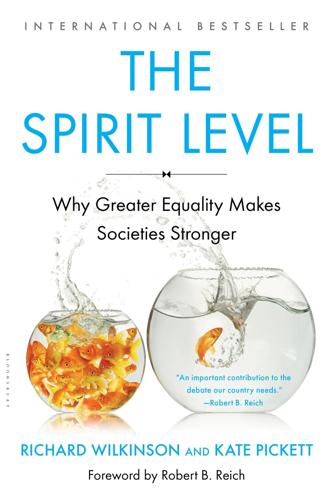
The Spirit Level: Why Greater Equality Makes Societies Stronger
by
Richard Wilkinson
and
Kate Pickett
Published 1 Jan 2009
Alexis de Tocqueville, Democracy in America In August 2005 Hurricane Katrina hit the Gulf Coast of the southern United States, devastating cities in Mississippi and Louisiana, overwhelming flood protection systems, and leaving 80 per cent of the city of New Orleans under water. A mandatory evacuation order was issued for the city the day before the storm hit, but by that time most public transport had shut down and fuel and rental cars were unavailable. The city government set up ‘refuges of last resort’ for people who couldn’t get out of New Orleans, including the Superdome, a vast sports arena, which ended up sheltering around 26,000 people, despite sections of its roof being ripped off by the storm.
…
Nobody worries about customers or passers-by stealing the blankets. Many people feel nostalgic for time past, when they could leave their doors unlocked, and trusted that a lost wallet would be handed in. Of all large US cities, New Orleans is one of the most unequal. This was the background to the tensions and mistrust in the scenes of chaos after Hurricane Katrina that we described above. CHICKEN OR EGG? In the USA, trust has fallen from a high of 60 per cent in 1960, to a low of less than 40 per cent by 2004.24 But does inequality create low levels of trust, or does mistrust create inequality? Which comes first? Political scientist Robert Putnam of Harvard University, in his book Bowling Alone, shows how inequality is related to ‘social capital’, by which he means the sum total of people’s involvement in community life.25 He says: Community and equality are mutually reinforcing . . .
…
A number of convincing studies in the USA have linked trust to health – people with high levels of trust live longer.29 In fact, people who trust others benefit from living in communities with generally high levels of trust, whereas people who are less trusting of others fare worse in such neighbourhoods.30 Trust, or lack of it, meant the difference between life and death for some people caught up in the chaotic aftermath of Hurricane Katrina. Trust was also crucial for survival in the Chicago heatwave of 1995. Sociologist Eric Klinenberg, in his book about the heatwave,31 showed how poor African-Americans, living in areas with low levels of trust and high levels of crime, were too frightened to open their windows or doors, or leave their homes to go to local cooling centres established by the city authorities.

The Quest: Energy, Security, and the Remaking of the Modern World
by
Daniel Yergin
Published 14 May 2011
In 2003 Republican senator John McCain and Democratic senator Joseph Lieberman had introduced a cap-and-trade bill in the U.S. Senate. It garnered a surprising 43 votes. Yet it did not have wide resonance and still seemed somewhat abstract. What was not abstract was what happened in 2005, when the devastating hurricanes Katrina and Rita struck the Gulf Coast of the United States. The media image of the hurricanes’ devastation—the desperate people in the Superdome and the refugees fleeing the submerged city—all this provided a grim metaphor for the storms and the ensuing destruction and chaos that could become more common with an increasingly more aggrieved climate. The next year a different kind of media education took place.
…
Lewis, Growing Apart: Oil, Politics, and Economic Change in Indonesia and Nigeria (Ann Arbor: University of Michigan Press, 2007), ch. 5. 8 Transparency International, Global Corruption Report 2004. 9 WAC Global Services, “Peace and Security in the Niger Delta: Conflict Expert Group Baseline Report,” Working Paper for SPDC, December 2003 (“criminalization”); Stephen Davis, The Potential for Peace and Reconciliation in the Niger Delta, Coventry Cathedral, February 2009, pp. 67–68, 101–33 (“new dimension”); Stephen Davis, “Prospects for Peace in the Niger Delta,” presentation, CSIS Africa Program, June 15, 2009; IRIN Africa, “Nigeria: Piracy Report Says Nigerian Waters the Most Deadly,” July 27, 2004 (“international waters”); Petroleum Intelligence Weekly, October 4, 2004 (“pushed”). 10 Jane’s World Insurgency and Terrorism, “Nigeria Delta Groups,” March 6, 2006. 11 Financial Times, June 7, 2006 (Greenspan). 12 National Oceanic and Atmospheric Administration, “Hurricane Katrina: A Climatological Perspective, Preliminary Report,” October 2005; Ivor van Heerden and Mike Bryan, The Storm: What Went Wrong and Why During Hurricane Katrina—the Inside Story from One Louisiana Scientist (New York: Viking, 2006), ch. 4. 13 U.S. Department of Energy, Impact of the 2005 Hurricanes on the Natural Gas Industry in the Gulf of Mexico Region: Final Report 2006, p. 2; U.S. Department of Energy, “Hurricanes Katrina and Rita Chronology”; U.S. Department of Energy, “Department of Energy’s Hurricane Response Chronology, as Referred to by Secretary Bodman at Today’s Senate Energy and Natural Resources Committee Hearing,” October 27, 2005.
…
No one took notice until August 13, 2005, when a forecaster at the National Hurricane Center in Miami identified a mass of clouds over the tropical Atlantic, 1,800 miles east of Barbados. Ten days later, those same clouds once again caught the attention of the National Hurricane Center as they merged with another tropical storm and began to slowly churn. On Thursday morning, August 25, what had now been christened Hurricane Katrina made landfall near Miami Beach but without heavy devastation. The storm gained scope as it passed into the Gulf of Mexico. By August 28, it had been transformed into a huge storm, a frighteningly ominous black mass, sprawling across the map—from the Yucatán Peninsula in Mexico to the southern United States.
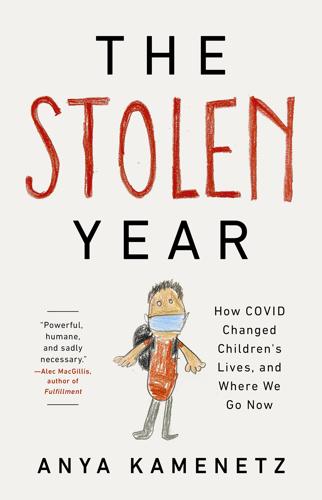
The Stolen Year
by
Anya Kamenetz
Published 23 Aug 2022
Why are such heavy government apparatuses set up to incarcerate children and separate them from their families—especially Black, Brown, and immigrant children—and relative scraps dedicated to help those families stay intact? These are the kinds of questions that require a dive into history. Each chapter will give you some of that background. I witnessed the aftermath of Hurricane Katrina as a young journalist. What was true then is true of all disasters. When collapses like this happen, fault lines become obvious to everyone. And when we rebuild, there is a chance to remake. The pandemic isn’t over. The story of what happened to children during the pandemic isn’t over by a long shot.
…
“And it’s particularly on children’s psychosocial well-being that school closures, that disruption in routine, [have] the largest effect.” DISCONNECTED YOUTH AFTER KATRINA I had eyewitness experience of this. New Orleans is my hometown. In the fall of 2005 and the spring of 2006 I reported on the aftermath of Hurricane Katrina. The storm shuttered public schools in the city for several months. I keep a photo on my computer desktop. I took it outside the River Center, a stadium turned storm shelter in Baton Rouge, Louisiana, on a hot weekday afternoon in September 2005. Three Black boys pose in crisp white undershirts that defy the humidity and the squalor of shelter life.
…
During COVID, the United States didn’t do either. SCHOOL CLOSURE IMPACTS WILL LINGER FOR YEARS I published a piece on NPR.org on April 2, 2020, outlining measurable consequences that were likely to last for years if schools stayed closed for COVID for even several weeks. It was based on research from New Orleans after Hurricane Katrina, Puerto Rico after Hurricane Maria, and countries across the world: Afghanistan, Argentina, Myanmar, Pakistan, the Philippines, Rwanda, Somalia, Sri Lanka, Syria, Uganda, and Venezuela. To sum up: When schools close, children don’t learn as much math or reading. They may forget what they have already learned.

Lonely Planet's Best of USA
by
Lonely Planet
Despite all the frantic rides, entertainment and nostalgia, the magic is watching your own child swell with belief after they have made Goofy laugh, been curtsied to by Cinderella, guarded the galaxy with Buzz Lightyear and battled Darth Maul like your very own Jedi knight. TRAVELSTOCK.CA / GETTY IMAGES © USA’S TOP 12 PLAN YOUR TRIP 7 New Orleans Reborn after Hurricane Katrina in 2005, New Orleans is back. Caribbean-colonial architecture, Creole cuisine and a riotous air of celebration seem more alluring than ever in the Big Easy. Nights are spent catching Dixieland jazz, blues and rock in bouncing live-music joints, and the city’s annual festivals are famous the world over.
…
Reserve online ($6.25 fee) to ensure admittance. (%202-426-6924; www.fords.org; 511 10th St NW; h9am-4:30pm; mMetro Center) F Newseum Museum Map Google Map This six-story, highly interactive news museum is worth the admission price. You can delve into the major events of recent years (the fall of the Berlin Wall, September 11, Hurricane Katrina), and spend hours watching moving film footage and perusing Pulitzer Prize–winning photographs. The concourse level displays FBI artifacts from prominent news stories, such as the Unabomber’s cabin and John Dillinger’s death mask. (www.newseum.org; 555 Pennsylvania Ave NW; adult/child $23/14; h9am-5pm; Wc; mArchives, Judiciary Sq) White House Visitor Center Museum Map Google Map Getting inside the White House can be tough, so here is your backup plan.
…
Bush soon attacked Afghanistan in an unsuccessful hunt for Al-Qaeda terrorist cells, then he attacked Iraq in 2003 and toppled its president, Saddam Hussein. Meanwhile, Iraq descended into civil war. Bush’s second term was marred by scandals and failures – torture photos from Abu Ghraib, the federal response in the aftermath of Hurricane Katrina and the inability to bring the Iraq War to a close. Promising hope and change, Democrat Barack Obama was elected as the nation’s first African American president in 2008, in itself a hopeful sign that the US’ long-standing racial divides were healing. However, Obama’s New Deal–style initiatives – such as a massive economic stimulus bill and an overhaul of the broken US healthcare system – were met with widespread protests from a growing anti-government, conservative ‘Tea Party’ movement.
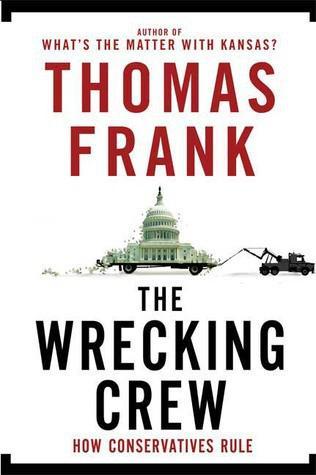
The Wrecking Crew: How Conservatives Rule
by
Thomas Frank
Published 5 Aug 2008
Sure, these people came out of the oil industry, I thought, but no way will they actually do favors for their old friends while they’re in office. It would just be too obvious, too sinister—like something out of a silent movie melodrama. It was just after Hurricane Katrina had destroyed New Orleans that I started to get it. Everyone who was able to turn on a TV knew the disaster was coming, and yet of its six thousand employees the Federal Emergency Management Agency (FEMA) managed only to station a single person in the city before the storm hit. As I read about the thirty thousand desperate people in the Superdome, my mind turned to the billions and billions and billions that we had spent on “preparedness” since 9/11—the great levee of public money that was supposedly necessary to keep us safe—and it slowly dawned on me that it had all been a waste.
…
It had establishment firms and feisty start-ups—megacontractors taking billions to do work that the government used to do itself; young men with a nice smile and a single client who just wanted to do a little clear-cutting out West somewhere. In conservative circles you would encounter entrepreneurs both formally and casually, at carefully programmed events laying out the opportunities for profit opened up by Hurricane Katrina, or in conversation at a banquet celebrating some conservative anniversary or other. At one such event in 2004, waiting for the presentation of the “Charlton Heston Commemorative Firearm,” I made the backslapping acquaintance of a freelance motivational speaker who, upon discovering that one of my tablemates was an officer of the Transportation Safety Administration, immediately sought his confirmation that “we’re gonna privatize that, right?”
…
It is a basic principle of conservatism—an axiom, a cornerstone, an immutable law of human nature, world history, and all the planets and stars—that turning over government operations to private businesses is the most efficient way to get things done. In reality, the conservatives’ outsourcing system has been a ripoff of such massive proportions that it deserves a Grace Commission all its own. In each of the Bush administration’s great initiatives—antiterrorism, the recovery from Hurricane Katrina, and Iraq reconstruction—privatized government played a starring role and proved itself a gold-plated botch. Again and again, and despite a veritable river of dollars, it failed to deliver what it promised. The Departments of Defense and Homeland Security routinely accepted contracts so ill-crafted they seemed designed more as a way to sluice billions into the contractors’ pockets than as a device for getting something done.38 And, being private, the contractors were largely shielded from oversight and accountability.
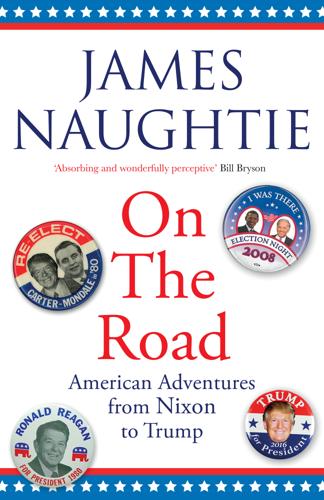
On the Road: Adventures From Nixon to Trump
by
James Naughtie
Published 1 Apr 2020
He was at the wide window in the observation car, and as the fringes of the city came into view, he started to talk about the event that made the city familiar to many people who previously hardly knew it, and brought to Americans a crisis so unexpected, and for most of them so shocking, that it stirred up thoughts about the state of their union. You can’t come to the city without realising again the lasting significance of the events that unfolded on the morning of Monday 29 August 2005, when Hurricane Katrina, which had been heading west from Florida for a week, spun out of the Gulf and hit the coast. The conductor, a big burly man in his fifties, said to us: ‘I didn’t believe this could happen, but when I saw what was happening to my home, I feared for my life. That’s no lie. I did. Imagine that.’
…
At home in front of the camera, Reagan in Ballyporeen, Ireland, 1984. 9. The ever-present flag. In the Governor’s mansion, Austin, Texas, 1991. 10. Days of Innocence. The Clintons in Georgia, 1992. 11. Bush and Blair in step in the White House, 2003. 12. A national debut for ‘the skinny guy’. Obama at the Democratic Convention, Boston, 2004 13. Hurricane Katrina. A city engulfed and national shame. 14. Over the top. Obama accepts the presidential nomination, Invesco Stadium, Denver, 2008. 15. At home. John McCain in his Senate office, 2012. 16. Donald Trump’s street fighter. Roger Stone shows off his Nixon tattoo. 17. The truth about broadbasting.
…
The Clintons in Georgia, 1992. © Joe Raedle / Getty Images Bush and Blair in step in the White House, 2003. © Rick Friedman / Corbis via Getty Images A national debut for ‘the skinny guy’. Obama at the Democratic Convention, Boston, 2004 © Chris Hondros / Getty Images Hurricane Katrina. A city engulfed and national shame. © Chuck Kennedy-Pool / Getty Images Over the top. Obama accepts the presidential nomination, Invesco Stadium, Denver, 2008. At home. John McCain in his Senate office, 2012. © Netflix / Everett Collection via Alamy Donald Trump’s street fighter.
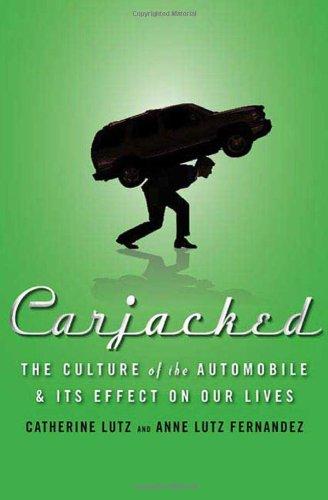
Carjacked: The Culture of the Automobile and Its Effect on Our Lives
by
Catherine Lutz
and
Anne Lutz Fernandez
Published 5 Jan 2010
DISASTER IN PLACE: KATRINA REVEALS THE LIFE-AND-DEATH CONSEQUENCES OF CAR OWNERSHIP White America was to some extent already aware of the problem of driving while black when Hurricane Katrina, with terrible drama, revealed the problem of not driving while black. The disparity in car ownership between white residents of the Gulf Coast and their African American, Native American, and Latino neighbors was made painfully clear as whites took to the highways before the storm, and the Superdome filled with people of color waiting for rescue from the devastated area. Only 15 percent of whites in Orleans Parish are without a car, while over 35 percent of African Americans and about 27 percent of Native Americans and Latinos are carless.18 New Orleans is not unique in its high levels of racial inequality in car access.
…
See also Buick; Cadillac; Chevrolet; Hummer; Pontiac; Saab; Saturn ghost items, 70 Glassner, Barry, 152 global warming, xii-xiii, 36, 161, 173–4, 209, 224, 228 Gore, Al, xiii, 150 GPS systems, 34, 42, 119, 156, 194, 222 graduated licensing systems, 193, 243–4n13 greenwashing, 89 GTO, 25 Hannity, Sean, 150 Harrison, Darryll, 43 Hartmann, Paul, 58, 62–3 Harvey, Steve, 151 health issues: asthma, 161, 167, 171–4 cancer, 161, 167–70, 172, 174, 192 251 heart attack and stroke, 161, 165, 167–8, 172, 184 obesity, 136, 161–4 stress, 155–7 workers in car-related fields and, 169–71 hedge funds, 123–4 Herbie (film), 7 Heritage Foundation of Franklin and Williamson County, 129–30 high-consideration products, 40, 46 Hill, Kevin, 40–1, 43 Hoffman, Dustin, 14 Hollywood, 7, 14, 18–9, 22, 33–4, 51, 113, 185, 200 Honda, 16, 19, 39, 43–4, 48, 53, 55–6, 60, 66–8, 73–4, 88, 206, 216 Houston, Douglas, 168 Hudson, Mike, 117–8 Hughes, Cheyenne, 112–3 Hulfish, Holly, 144 Hummer, 3, 42, 51, 76, 120, 199 Hurricane Katrina, 114, 173 hybrid cars, xiii, 49, 55, 65–7, 83, 88–90, 215 Hyundai, 75, 108, 124, 166 I Am Legend (film), 34 Illich, Ivan, 125 individualism, 47, 146–7, 203 Infiniti, 77, 156–7 Iraq War, 17, 35, 96–7, 181, 189 Iron Man (film), 13–4 Isuzu, 16 Italian Job, The (film), 51 J. D. Byrider, 108 Jaguar, 74 James, Leon, 157–8 Jeep Wrangler, 16, 65 Johnson, Stephen L., 175 Joyner, Tom, 151 Katz, Jack, 153–5 Kia, 2 Klare, Michael T., 89–90 Klein, Naomi, 10 Krugman, Paul, 126 Land Rover, 16, 27 Lexus, 54, 74, 125, 165 Limbaugh, Rush, 149–50 Lincoln, 16, 75, 143 Live Free or Die Hard (film), 7 London, 134, 225 252 Carjacked Ludwig, Art, 99 luxury, 74–8 market fundamentalism, 35–6 marketing strategies: auto shows and, 48–9 car regulation and, 18 of Chevrolet, 178 children and, 50–2 credit and, 84–7 emotions and, 40–6 of Ford, 42 of Honda, 44, 48, 55 interactive, 40 luxury and, 74–8 niche, 32 of Nissan, 43–5 progress and, 34 safety and, 203 self-expression and, 56–7 Sloan’s GM, 64 status and, 57–60 SUVs and, 73, 89, 199 teenagers and, 2, 51–4, 59 of Volkswagen, 27–8 mass transit.
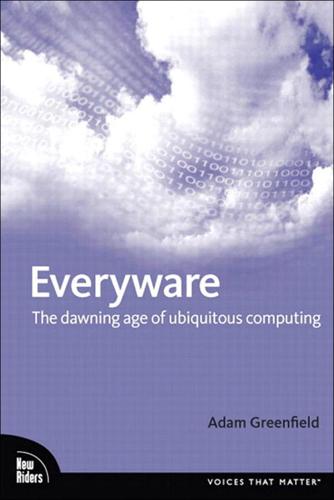
Everyware: The Dawning Age of Ubiquitous Computing
by
Adam Greenfield
Published 14 Sep 2006
This is one danger of coming to rely too heavily, or too intimately, on ubiquitous technology. But unlike literal amputations, which tend to be pretty noticeable, these things only become visible in the default of the technical system in question. The consequences of an overreliance on extensions can clearly be seen in the aftermath of Hurricane Katrina, in which we saw that New Orleans' evacuation plan was predicated on the automobility of the city's entire population. When the storm revealed that assumption to have been unjustified, to say the least, we saw the stunning force with which a previously obscured amputation can suddenly breach the surface of awareness.
…
Building and facility managers with a healthy line item in their budget to provide for the acquisition of gear but neither the ongoing funds nor the authority to hire security staff. Again, the manufacturers and vendors of that gear, scenting another yawning opportunity. And never least, us, you and I, unable to forget the rubble at Ground Zero, spun senseless by routine Amber Alerts and rumors of Superdome riots, and happy for some reassurance of safety no matter how illusory. These are obviously thorny, multisided issues, in which the legitimate prerogatives of public safety get tangled up with the sort of measures we rightfully associate with tyranny. There should be no doubt, though, that everyware's ability to facilitate the collection and leveraging of large bodies of data about a population in the context of security will be a major factor driving its appearance.
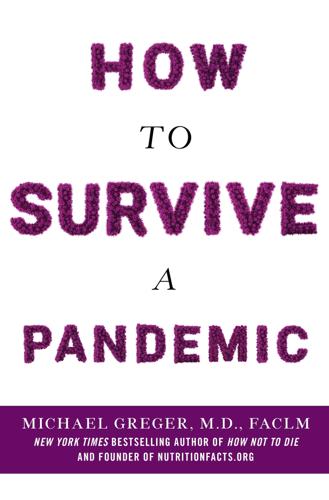
How to Survive a Pandemic
by
Michael Greger, M.D., FACLM
Many of the world’s cities may have no more than five to seven days of chlorine on hand to actually use and purify their water supply.”3133 We might be forced to endure deep winter with no heat.3134 The crumbling of critical infrastructure could be a result, in part, of rampant absenteeism.3135 “Billions would fall sick,” a WHO spokesperson explained, “billions more would be too afraid to go to work, leading to a collapse of essential services.”3136 Top-level UN pandemic catastrophe simulations suggested that maintaining water, power, and provision of food for the healthy may save more lives than focusing on treatment of the sick.3137 Like many police in New Orleans after Hurricane Katrina, even essential workers such as doctors simply might not show up for work.3138 Would they be asked to operate in overflow “hospitals”—gymnasiums, arenas, armories—anywhere the sick could be warehoused? Garrett predicted that these makeshift sickbays may deteriorate into post-Katrina Louisiana Superdome squalor.3139 Under those conditions, Osterholm wondered, “Would you show up to work? … Would your loved ones show up to work if they were being exposed to a life threatening infection with virtually no protection?”
…
Wars, famines, earthquakes, and acts of terror, for example, tend to be localized both in time and space. We look on in horror, but may not be affected ourselves. Pandemics are different. Pandemics are worldwide epidemics. They happen everywhere at once, coast to coast, and can drag on for more than a year.164 “With Hurricane Katrina, people opened their homes, sent checks and people found safe havens,” wrote a global economic strategist at a leading investment firm about one of the deadliest natural disasters in U.S. history, but with a pandemic “there is nowhere to turn, no safe place to evacuate.”165 The word “influenza” derives from the Italian influentia, meaning “influence,” reflecting a medieval belief that astrological forces were behind the annual flu season.166 In 1918, though, the Germans called it Blitzkatarrh.167 To the Siamese, it was Kai Wat Yai, The Great Cold Fever.168 In Hungary, it was The Black Whip.
…
“There is a basic gut feeling that this is my problem, I will deal with it in my way. Now, in a globalized world, any disease is one airplane away. It is not a provincial or national issue, it’s a global issue.”2448 The World Trade Organization has more powers than the World Health Organization.2449 Analogous to FEMA during the Hurricane Katrina crisis, the WHO also lacks the authority to investigate outbreaks without an invitation.2450 For SARS, though, the WHO did issue its first ever travel advisory in fifty-five years.2451 The ensuing political backlash over lost trade and tourism may explain some of the deference to member nations in somewhat downplaying the immediacy of the current pandemic threat.2452 In the understated fashion typical to international law journals, one review concluded, “The soft law process on infectious disease control has not been working well.”2453 “We have as much chance of stopping a pandemic as we would of putting a curtain around Minnesota and keeping out winter.”

Twitter and Tear Gas: The Power and Fragility of Networked Protest
by
Zeynep Tufekci
Published 14 May 2017
Such altruism does not always occur, of course, especially if there are previous cleavages and deep polarizations within the society, but neither is it an uncommon response. In the United States, the September 11 terrorist attack was met by New Yorkers coming together immediately to help the survivors. When Hurricane Katrina hit New Orleans, contrary to media reports at the time which were grossly incorrect, the mostly African American survivors trapped in the Superdome without power, water, or functioning toilets nevertheless assembled an impressive self-organization that saved many lives.25 Of course, post-disaster situations often involve significant trauma and death, but protests have risks too.
…
See also false news homophily, 9, 172, 268 Hong Kong democracy protests: culture of protest in, 87, 93, 99 government countermeasures to, 232–36 “Occupy Central” title of, 232–33, 234 “umbrella movement” name of, 233 horizontalism: culture of protest focus on, 83, 94 organizational structure based on, 50, 51–53, 76–77, 81, 82, 271, 276 human microphones, culture of protest and use of, 95–100 humor as political criticism, 45, 111–12 Hurricane Katrina, mutual altruism following, 104 Hurricane Sandy, Occupy participant involvement after, 215 “I Have a Dream” speech (King), 62, 66, 67, 69–70 India, capacity signaling in, 197 Indignados protests: capacity signaling via, 210, 275, 276 culture of protest in, 87, 93, 99 information inundation and disinformation, 39–40, 228–29, 230–31, 236–41, 245–46, 265, 273–74, 283n2.
…
See also Hong Kong democracy protests United States: ACT UP AIDS awareness movement in, 204–5 anonymous social interaction in, 174–75 antiwar movement in, 100–101, 123, 189, 190, 204, 205, 221 Black Lives Matter movement in, 154–56, 177–78, 197, 205–9, 275, 298nn23–24 capacity signaling in, 189, 190, 193–94, 196, 197, 204–18, 221–22, 274–75 civil rights movement in, 61–70, 81–82, 94, 96–99, 134, 140, 193, 197 Confederate flag debate in, 197–98 credibility denials in, 250 culture of protest in, 83, 86, 87, 91, 93–94, 95–100 Ferguson protests in, 93, 154–56, 158–60, 161–62, 206–8 government countermeasures in, 240–41, 243, 250 Hurricane Katrina in, 104 Hurricane Sandy in, 215 information inundation and disinformation in, 240–41 Occupy movement in, 38, 81, 83, 86, 87, 91, 93, 95–100, 209–16, 217, 221–22, 275, 276 platforms and algorithms in, 134, 143, 144, 152–53, 181–82 political sabotage and false news in, 254, 264–65, 266 report and takedown platform liability in, 143, 144, 181 Sanders’s campaign in, 81, 216, 275 Seattle WTO protests in, 86, 213 September 11th terrorist attacks in, 104, 213 social construction of race in, 126–27 State Department terrorist organization list in, 150 Tea Party movement in, 11–12, 216–18 Wisconsin anti-union bill protests in, 93, 210 women’s movement in, 193–94 Upworthy, 161 urban areas.

When You Find Out the World Is Against You: And Other Funny Memories About Awful Moments
by
Kelly Oxford
Published 17 Apr 2017
“We need to leave and go back to Canada, where the only danger is the cold and a tornado every seventy-five years.” “Why?” “An earthquake could kill us. An earthquake could kill us while the kids are in school and then the kids will sit there for a week in tents until they are turned over to the state in some sort of Hurricane Katrina, Superdome situation.” “That won’t happen.” “It could.” “It won’t.” “James, we have one kid in the Valley, one kid in Hollywood, and one that’s at home. If there is an earthquake, we need a plan. Our cell phones won’t work, who will get which kid? We need running shoes in our car trunks. We won’t be able to drive anywhere.
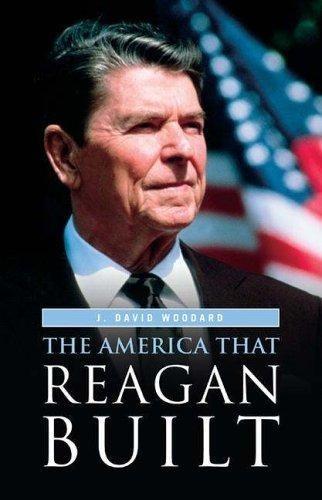
The America That Reagan Built
by
J. David Woodard
Published 15 Mar 2006
When the news media began to report that the 17th Street Canal levee in the city had been breached, the only conclusion was that New Orleans was in serious trouble of being obliterated.45 The Superdome and the New Orleans Convention Center were opened as emergency shelters, but no one had any plans to care for the people there or get them out of the danger of rising water. Within hours both shelters were declared unsafe and unsanitary. Reports of rape and beatings were widespread, and several people died within the huge Superdome. Around the city, stores were looted and lawlessness became the norm. Reports were that as many as 20,000 people were around the doomed Dome, and the television regularly carried their pleas for help.
…
W., 113; Bush, George W., 213; Clinton, William Jefferson ‘‘Bill,’’ 155–56, 160, 189; Middle East, 88; Reagan, Ronald, 25, 52, 57, 59 Fox television, 74 Index free market economics, 70, 103 Free to Choose (Friedman), 70 Gates, Bill, 163–64 GDP (gross domestic product), 63 General Motors, 67 Generation X, 162, 164, 213 genocide, 159–60, 191 Germany, 141 Gingrich, Newt, 158, 183–84, 196–97 global communications system, 77 GNP (Gross National Product), 35, 48 Goldman, Ronald, 172–73 GOP, 36, 101, 151, 158, 188, 197, 212, 224, 232, 236, 241 Gorbachev, Mikhail, 95, 97–100, 116, 127 Gore, Albert ‘‘Al,’’ 108–9, 144, 149, 204, 207–10, 233 Gramm-Rudman-Hollings Act of 1985, 120 Grenada operation, 58–59, 61 Growing Up Digital (Tapscott), 163 Gulf War, 123–39, 225; Second, 227–28 Hart, Gary, 81–82, 107 health care, 151–54, 191 Health Insurance Association of America, 153 highway of death, 136, 138 hijacking, 54, 88–89, 175, 214–17, 219 Hinkley, John W., Jr., 37 hostage crisis, 8–11, 13, 26, 31, 34; Desert One, 11; ‘‘Eagle Claw,’’ 12; Lebanon, 1985, 88–91 HUD (Housing and Urban Development) budget, 50 Hurricane Hugo, 119 Hurricane Katrina, 243– 45 Hussein, Saddam, 123–25, 128–30, 132–34, 136–38, 198, 224–31, 234, 236, 242 Hyde, Henry, 197–98 image politics, 77 immigration, 68 impeachment, 197–99 INF Treaty (Intermediate Nuclear Forces Treaty), 97, 100 279 ‘‘Inside the Beltway,’’ 32, 40, 43 interest groups, 8, 80, 117 Iran, 123–24 Iran-Contra scandal, 88–92, 106 Iranian rescue mission, 13–14 Iran-Iraq War, 124, 126, 226 Iraq, 125–26, 128–29, 131, 133–34, 225–26, 228, 242– 43; Iraq War, 227–28, 230–33, 236–37, 241; Kurds and Shiites, 138–39; military forces, 126, 129, 134–38, 224, 230, 242 Iraq Interim Governing Council, 242 Iraqi National Assembly, 243 Iraqi Republican Guard, 125, 135–36, 138, 228, 230 Israel, 127, 133, 155 Jackson, Jesse, 80–82, 108–9, 144 Kaczynski, Theodore John ‘‘Ted,’’ 178–80 Kennedy, Ted, 26–27 Kerry, John F., 233–37 Keyes, Alan, 187, 205 Khomeini, Ayatollah Ruhollah, 1, 8–10, 14, 124 King, Rodney Glen, 169 –71 Kohl, Helmut, West German Chancellor, 86 Kolmeshohe Cemetery, 87.
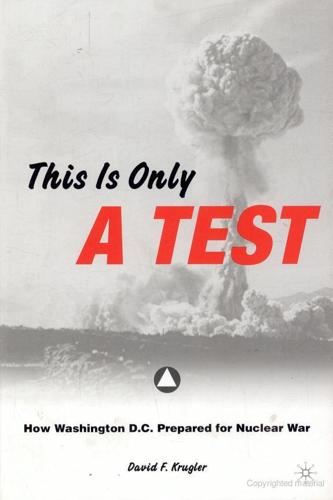
This Is Only a Test: How Washington D.C. Prepared for Nuclear War
by
David F. Krugler
Published 2 Jan 2006
New evacuation routes were worked out with federal agencies as well as the Maryland and Virginia transportation departments; furthermore, a plan approved in August 2002 to evacuate all federal workers within 15 minutes includes a “trigger” to notify the District, media, and authorities in Maryland and Virginia.30 In August 2005, however, the inadequate federal, state, and local responses to Hurricane Katrina’s devastation of New Orleans brought renewed scrutiny of post 9/11 emergency preparations for Washington. Katrina spared New Orleans a direct hit, but the water of Lake Pontchartrain roiled through breached levees, flooding the city. Tens of thousands of residents unable or unwilling to heed the pre-storm evacuation order huddled under highway overpasses, retreated to their attics, or sought refuge at the squalid Superdome, which, though officially designated as a mass shelter, lacked sufficient food, water, and bedding for evacuees.
…
Hill, Arthur M., 25, 30–2 Hiroshima bombing, 9, 16, 21–2, 119 Hoegh, Leo appointed FCDA Administrator, 99 opposition to dispersal, 143 plans for regional relocation centers, 164 sending of wartime essential employees to Mount Weather, 163, 166, 186 shelter policy of, 136–7, 141–2 Holifield, Chet criticism of Eisenhower administration, 137 hearings of, 135–6 interest in Washington’s civil defense, 135, 172 Holland, Spessard, 60, 62–3 Homeland Security Department, 8, 189 Hopley, Russell J., 24, 55–6 Howard University, 14–15 Humphrey, George, 106, 127 Hurricanes Katrina and Rita, 187–8 hydrogen weapons effects described, 9 Soviet tests of, 75, 99 U.S. tests of, 9–10, 75, 99, 101 see also Soviet Union, nuclear weapons of; United States, nuclear weapons of intercontinental ballistic missiles (ICBM) see ballistic missiles John McShain, Inc., 71–2, 74 Johnson, Louis, 35, 38, 49, 64, 66, 170 Johnson, Lyndon, 167, 179, 182 Joint Chiefs of Staff, 1–2, 63–4, 108, 124, 127, 132–3, 158, 166 Joint Emergency Evacuation Plan (JEEP), 132–4, 158, 170, 177 Justice Department, 128, 157, 165, 182 Kennedy, John F. as Congressman, 35, 49, 170 during Cuban Missile Crisis, 174–9 fallout shelter program of, 171–3 foreign policy of, 169 inauguration of, 169 transition meeting with Eisenhower, 169–70 Kennedy, Robert, 174, 176, 178 Khrushchev, Nikita, 171, 174, 177–9 Kierkegaard, Soren, 88 Korean War, 32, 48–51, 59, 69, 87, 89–90, 92, 169 La Guardia, Fiorello, 13, 22 Landis, James M., 13–14, 22 Langley, Va., 103–5, 144 Lapp, Ralph E., 23, 100 Lawton, Frederick J., 25, 49–50, 62, 96 Library of Congress, 15, 185 Lifton, Robert Jay, 88–9 MacArthur, Douglas, 49, 59, 97 Marshall, George, 29, 66 martial law, 127, 161–2, 180–2 Maryland, 6, 34, 43, 63–4, 95, 101–2, 121–2, 133, 146, 151, 154, 187 see also individual cities and counties McCarthy, Joseph, 47, 90 McCormack, John, 179–82 McDermott, Edward, 176–7, 181 McKellar, Kenneth, 51, 70 McMahon, Robert, 19 McMillan Plan, 3 McNamara, Robert, 169–70, 174, 176 McPhee, Roemer, 159 microwave communications, 65–6, 94, 107, 128, 151 military ability to protect United States from attack, 90–1 views on civil defense, 22 see also Defense Department Military District of Washington (MDW), 45, 66, 138, 154, 186 Miller, Lorenzo, 82–4, 138 Millison, Earl G., 93–5 Mobilization Plan C, 159–60 Montgomery County, Md. attack warning system of, 151, 154–5 CIA and, 104 civil defense in, 93, 128–9, 139–42, 173, 184 ground observer posts in, 93, 140 segregation in, 139, 144–5 Mount Pony, Va., 183, 185 Mount Weather, Va. on 9/11, 186 communication system of, 155–6, 164 Cuban Missile Crisis and, 176–82 daily operations of, 154, 165–6 developed as relocation site, 95, 107 existence revealed, 107–8, 185 Operation Alerts and, 125–8, 157, 161–2 Operation Readiness and, 109 personnel and agencies with assignments at, 133, 136, 163, 165–6, 183, 218 n.45 takeover of Washington’s attack warning system, 151, 154–5 Mumford, Lewis, 88–9 Munitions Board, 63 Nagasaki bombing, 9, 17, 21–2, 119 National Academy of Sciences, 114, 130, 133, 135 National Archives, 157–8 National Association for the Advancement of Colored People (NAACP), 15, 56, 81 National Bureau of Standards (NBS) campus in Washington, D.C., 1–2, 144 dispersal of, 5–6, 144–5, 185 operations at Front Royal, Va., 94 protection of Charters of Freedom, 158 National Capital Park and Planning Commission (Park Commission), 32–3, 37–8, 42–3 National Capital Planning Commission (NCPC), 102, 104–5, 143, 217 National Capital Regional Planning Council (NCRPC), 101, 104–5, 143 National Damage Assessment Center (NDAC), 161, 163, 165–6 National Emergency Airborne Command Post (NEACP), 184 National Mall, 32, 39, 51, 101–2, 104, 128, 181, 188 see also ‘tempos’ National Security Act, 19–20, 200 n.57 National Security Agency, 134, 140 National Security Council (NSC) continuity planning of, 96, 99–100, 105–6, 131, 160, 162, 166 creation of, 20–1 debate on evacuation of Washington, D.C., 115, 124, 132 dispersal policies of, 101, 143 Executive Committee (ExComm) of, 174–6, 178 policymaking of, 98, 119, 136, 189 studies of Washington’s attack warning system, 150–1 National Security Resources Board (NSRB) civil defense and, 45–7, 49, 55–6, 91–3, 120 continuity of government planning of, 5, 7, 25–6, 30–2, 42, 96, 105, 200 n.57 disbanded, 98 dispersal planning of, 30–2, 36–8, 42, 59, 61 formed, 19–21, 25 ineffectiveness of, 5, 25, 96, 100 national security state civil defense and, 21–4, 56, 87, 92, 131 dispersal and, 38 estimates of Soviet striking capability, 116 origins of, 19–21 naval aide to the President, 69, 75, 81, 98, 159, 162, 170, 176, 182 see also Beach, Edward; Dennison, Robert Naval Gun Factory, 1, 11, 23 Navy, Bureau of Yards and Docks, 143, 166, 171 New Deal, 3, 11–12, 14, 20, 25, 32 new towns, 6, 147, 185 Nike antiaircraft missiles, 91, 111, 154, 159, 179–80 Nolen Jr., John, 33–4, 39, 42, 102 nonessential agencies, 37, 42–3 nuclear weapons see atomic weapons; hydrogen weapons see under Soviet Union; United States Oakes, Guy, 118 O’Connell, Robert, 179, 181 Office of Civil and Defense Mobilization (OCDM), 163–6, 170–1, 181 Office of Civilian Defense (OCD), 13–16, 46 Office of Defense Mobilization (ODM) continuity planning of, 106, 134, 156, 159–60, 166–8 creation of, 98 dispersal policies of, 101–4, 142 merged with FCDA, 163 participation in exercises, 108–9, 126–9, 162 see also Flemming, Arthur Office of Emergency Planning (OEP), 171, 176–8, 180–2 Office of War Information (OWI), 14–15 Offutt Air Force Base, 111, 186 see also Strategic Air Command Operation Alert 1954, 120–21, 123 1955, 124–30, 138, 155–6, 159, 165 1956, 155–9 1957, 160–2, 176 1958, 162–3 Eisenhower’s part in creation of, 6, 98 unrealistic scenarios of, 132, 159, 182 Operation Fireball, 119–20 Operation Readiness, 106, 108–9 Oppenheimer, J.
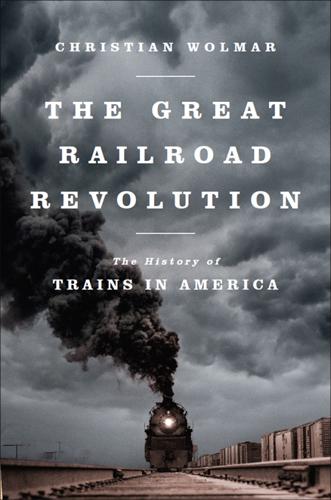
The Great Railroad Revolution
by
Christian Wolmar
Published 9 Jun 2014
Albro Martin, Railroads Triumphant (Oxford University Press, 1992), 29. 29. James A. Ward, Railroads and the Character of America, 1820–1887 (University of Tennessee Press, 1986), 99. 30. Amtrak ran its Sunset Limited service between Los Angeles and Jacksonville, Florida, from 1993 to 2005, when the track east of New Orleans was wrecked by Hurricane Katrina. In Canada, too, there have been various coast-to-coast services. 31. Richard White, Railroaded: The Transcontinentals and the Making of Modern America (W. W. Norton, 2011), xxi. 32. George H. Douglas, All Aboard: The Railroad in American Life (Paragon House, 1992), 115. 33. Keith L. Bryant Jr., introduction to Encyclopedia of North American Railroads, edited by William D.
…
On the passenger side, improvements were still being made to the prestige passenger services in the immediate postwar period. Now “vista-domes” were added to the streamliners, special coaches with a glass-roofed upper deck that gave passengers an unparalleled panoramic view of the passing scenery. The ultimate development came in the early 1950s with “super-domes,” with bigger and better viewing points, used by several railroads, principally on the long scenic trips through the Rockies and the western deserts. In order to attract leisure passengers, timetables were adjusted so that the train went through the most picturesque areas in daylight. The Baltimore & Ohio experimented with flashing a spotlight into the wilderness during nighttime hours to give the passengers in the upper deck something to see, but this daft idea was soon abandoned.
…
The first domeliner was introduced by that pioneering railroad man Ralph Budd of the Burlington, and soon about a dozen major American railroads were using them to attract passengers. The Great Northern’s Empire Builder was the “supreme example” of the concept, according to Geoffrey Freeman Allen, as the railroad repeatedly spent millions of dollars on providing ever more luxurious train sets: “[On the] Empire Builder, the upper floor of the ‘Super-Dome’ seated 74 on settees angled towards the side-windows for comfortable viewing: the lower floor housed an enticing 35-seater lounge bar and writing room; an electrically powered dumb waiter made it simple to hoist drinks and snacks from the bar to passengers relaxing in the air- conditioned solarium above.”7On the Twin Cities Hiawatha, drinkers in the “Tip-Top-Tap” lounge were advised of the next stop, as the name was illuminated on a display below the clock, whereas on the Santa Fe’s Super Chief, passengers were kept up to date with news bulletins and stock reports and could write letters on special letterhead.

Falter: Has the Human Game Begun to Play Itself Out?
by
Bill McKibben
Published 15 Apr 2019
“Greece Wildfires: Dozens Dead in Attica Region,” bbc.com, July 24, 2018. 24. Kodas, Megafire, p. 116. 25. Will Dunham, “Bolt from the Blue: Warming Climate May Fuel More Lightning,” Reuters, November 13, 2014. 26. Kodas, Megafire, p. 20. 27. Jack Healy, “Burying Their Cattle, Ranchers Call Wildfires ‘Our Hurricane Katrina,’” New York Times, March 20, 2017. 28. Michael E. Mann, “It’s a Fact: Climate Change Made Hurricane Harvey More Deadly,” Guardian, August 28, 2017. 29. Doyle Rice, “Global Warming Makes ‘Biblical’ Rain Like That from Hurricane Harvey Much More Likely,” USA Today, November 14, 2017. 30.
…
So: ocean temperatures had risen about a degree Fahrenheit off the Texas coast in recent years, which means, on average, about 3 to 5 percent more water in the atmosphere.28 And when Hurricane Harvey wandered across the Gulf in August 2017, it crossed a particularly warm and deep eddy, intensifying “at near record pace” into a Category 4 storm. But it wasn’t its winds that tied it with Katrina as the most economically damaging storm in American history; it was the rain, which came down in buckets. Not in buckets—in football stadiums. Thirty-four trillion gallons, enough to fill 26,000 New Orleans Superdomes. That’s 127 billion tons, enough weight that Houston actually sank by a couple of centimeters. In places, the rainfall topped fifty-four inches, by far the largest rainstorm in American history. “Harvey’s rainfall in Houston was ‘biblical’ in the sense that it likely occurred around once since the Old Testament was written,” one study concluded.29 Because we’ve warmed the atmosphere, the odds of a storm that could drop that much rain on Texas have gone up sixfold in the last twenty-five years.30 Three months after the storm, another study found that the rainfall was as much as 40 percent higher than it would have been from a similar storm before we’d spiked the carbon dioxide levels in the atmosphere.31 When Hurricane Florence hit the Carolinas in September 2018, it set a new record for East Coast rainfall—the storm dumped the equivalent of all the water in Chesapeake Bay.32 This isn’t something that happens just in Houston.

The Price of Silence: The Duke Lacrosse Scandal
by
William D. Cohan
Published 8 Apr 2014
If the guys see I’m frazzled, it’s going to filter down. But when I was alone, you can imagine what was going through my mind.” The catalyst for his career at Duke turned out to be the public release of McFadyen’s e-mail. The magazine reported the McFadyen e-mail “symbolically” was “the Duke case’s equivalent of the Superdome after Hurricane Katrina, confirming all the worst suspicions about the roles of class, race, sex, power, and privilege at the university.” Thirty minutes after the McFadyen e-mail came out, Alleva asked to see Pressler. In the days leading up to the meeting, Pressler offered to resign if it would improve the overall situation.